- Gameumentary
- Review in 3 Minutes
- Design Delve
- Extra Punctuation
- Zero Punctuation
- Area of Effect
- Escape the Law
- In the Frame
- New Narrative
- Out of Focus
- Slightly Something Else
- Terms of Service
- Privacy Policy

5 Faster-Than-Light Travel Methods and Their Plausibility
Science tells us that it is impossible for an object to travel at light speed, let alone faster than that. But so many of our favorite science-fiction movies, games, and TV shows rely on faster-than-light travel to craft their interplanetary adventures.
Let’s take a look at five means of FTL found in sci-fi that don’t break the rules of relativity and examine how plausible they are based on the science behind them.
1. Hyperdrive
Popularized by Star Wars and used extensively in fiction, a hyperdrive enables a spaceship to travel at FTL speeds by entering another dimension known as “hyperspace.” The spaceship isn’t actually traveling faster than the speed of light, but rather is making use of hyperspace as a shortcut, and the hyperdrive is the mechanism that shunts the spaceship into and out of this parallel dimension.

Specific coordinates within hyperspace have corresponding coordinates in normal space, but the distance between those two points will be shorter in hyperspace, allowing for a faster journey. Before making a “hyperspace jump,” calculations must be made to find the matching coordinates between hyperspace and normal space in order to know when and where to exit hyperspace at the desired normal space destination.
Is it plausible?
Physicist Bukrhard Heim proposed a theory in 1977 that FTL travel may be possible by using magnetic fields to enter higher-dimensional space. The theory uses a mathematical model that calls upon six or more dimensions in an attempt to resolve incompatibilities between quantum mechanics and general relativity, but Heim’s ideas have not been accepted in mainstream science. Still, the fact that a theoretical physicist devoted a large portion of his life in pursuit of a theory that could lead to a means of space travel lends the concept of hyperspace a little more credibility than if it were simply the fancy of a sci-fi writer.
2. Jump Drive

Seen in such works as Battlestar Galactica , a jump drive allows for instantaneous teleportation between two points. Similar to a hyperdrive, coordinates must be calculated to ensure a safe jump; the longer the desired travel distance, the more complex the calculation. In theory, there is no limit to how far a jump can take a ship, but an incorrect calculation may result in a catastrophic collision with a planet or space debris.
The Dune universe’s FTL, based on the fictional “Holtzman effect,” can also be considered a jump drive.
Master of hard sci-fi Isaac Asimov was the first to suggest the idea of a jump drive in the Foundation series, which lends some credibility to the idea. However, most fiction doesn’t clearly explain the principles of physics that allow for this teleportation, making it impossible to claim a jump drive as plausible. However, if it functions by opening a wormhole…
3. Wormholes

A wormhole, as seen in the Stargate franchise, allows for near-instantaneous travel across vast distances. Wormholes may be naturally-occurring or man-made, but are almost always temporary and serve as tunnels through spacetime.
Imagine our universe as a piece of paper, and an ant walking on that piece of paper as a spaceship. If the ant wants to walk from one end of that piece of paper to the other, the fastest way to do so would be to travel in a straight line. But paper, like space, bends. If you bend the paper into a U shape, the ant’s journey goes largely undisturbed – it still has to traverse the same distance along that line. However, in 3D space, the two ends of the paper are very close to each other now. Cut off a piece of a drinking straw and let the ant use it as a bridge or tunnel between the two ends of the paper, and the journey is suddenly much shorter.

While we have never directly observed any evidence for one, wormholes are theoretically possible. Albert Einstein and his colleague Nathan Rosen first discovered wormholes in 1935 as solutions to equations within Einstein’s general theory of relativity – the math says they can exist.
Since then, other scientists, including Stephen Hawking, have argued that it may be possible to traverse a wormhole, under the right circumstances. The debate surrounding wormholes isn’t about their plausibility, but rather how they may be created and sustained.
4. Slipstream

The concept of slipstream can be found in such works as Star Trek , Doctor Who , and the Halo video game franchise, but there is no widely-agreed upon definition of what slipstream is or how it works beyond it being a means of FTL. We’ll consider the slipstream seen in Gene Roddenberry’s Andromeda , where it is “not the best way to travel faster than light, it’s just the only way,” as per the show’s protagonist.
Slipstream is a form of interdimensional highway in which ships ride a series of slipstream “strings” – the unseen connections between all objects in the universe. These strings are in constant flux and form a tangled mess of intersections and divergent paths. Any time a pilot reaches a fork in the road, he has to guess which is the correct path to take to continue along toward his desired destination. Before the pilot makes that decision, both paths are simultaneously the correct and incorrect route, and it is the act of choosing a path that forces one to be correct and the other to be incorrect – if this made you think of Shrödinger’s cat, that does seem to be the basis for this concept. A computer selects the “correct” path 50% of the time, but due to intuition, a human picks the correct path 99.9% of the time.
There are no mainstream scientific theories that support this idea of slipstream. Reading the “lore” of this means of FTL evokes fantastical interpretations of string theory, quantum entanglement, and other concepts in modern physics, but the ideas are supported only through their internal consistency rather than actual fact, much like a well-explained magic system that allows fictional wizards to cast spells.
5. Warp Drive

Popularized by Star Trek , a warp drive distorts space around a ship while leaving the ship itself inside a “bubble” of normal space. The space in front of the ship is contracted, while the space behind it is expanded, and the ship “rides” the distortion wave at FTL speeds. Technically, it is not the ship that is moving, but rather space itself, which is how we avoid breaking any laws of physics.
Imagine a surfer slowly paddling back to shore. When a wave comes, it will lower the water level in front of him and raise the water level behind him, and he can ride the downward slope all the way to shore. Relative to the wave, the surfer isn’t moving – he’s staying between the crest and the trough, and it is instead the wave that is moving.
Surfing doesn’t quite work like that, but it’s a simplification that we can all visualize. In a similar manner to how a wave will distort water to propel a surfer, a warp drive will distort space to propel a ship.

In 1994, the Alcubierre drive was proposed as a theoretical means of FTL travel and is based on a mathematical solution to equations within Einstein’s general theory of relativity. Just like a warp drive, the Alcubierre drive would contract space in front of a spaceship and expand space behind it.
NASA has been actively researching this technology since 2012 , and the lead researcher even worked with a 3D artist to develop a model of what a warp-capable ship might look like . As far as real-life FTL goes, warp is the current front-runner to becoming reality.
As far as real-life FTL travel goes, the fictional favorites can be found in Star Trek and Stargate : the warp drive, and wormholes. Both are theoretically possible; however, both require further scientific breakthroughs before practical testing can begin. In either case, we need to discover “exotic matter” – hypothetical particles with negative mass – to get these mechanisms to work. “Element zero” from the Mass Effect series, the rare material that is essential to FTL travel in that universe, doesn’t quite fit the description, but the lore is at least scientifically sound in suggesting that some new, rare form of matter is required to make this technological leap.
The good news is that scientists don’t believe this is a matter of if, but rather when. There will be a time in the future when a stately, bald man in uniform will sit back in a command chair and relay the order, “Engage.”
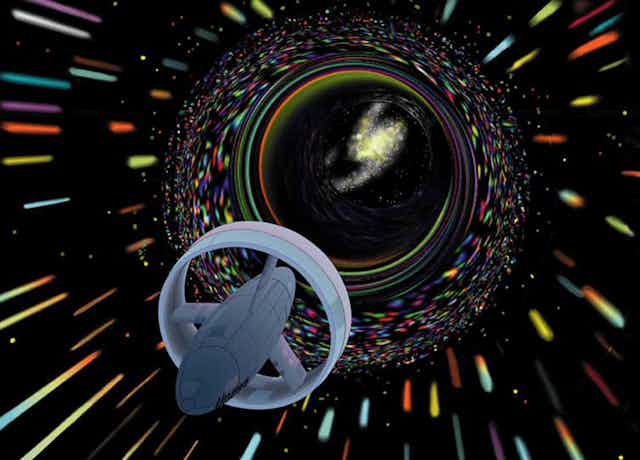
Warp drives: Physicists give chances of faster-than -light space travel a boost
Associate Professor of Physics, Oklahoma State University
Disclosure statement
Mario Borunda does not work for, consult, own shares in or receive funding from any company or organisation that would benefit from this article, and has disclosed no relevant affiliations beyond their academic appointment.
Oklahoma State University provides funding as a member of The Conversation US.
View all partners
The closest star to Earth is Proxima Centauri. It is about 4.25 light-years away, or about 25 trillion miles (40 trillion km). The fastest ever spacecraft, the now- in-space Parker Solar Probe will reach a top speed of 450,000 mph. It would take just 20 seconds to go from Los Angeles to New York City at that speed, but it would take the solar probe about 6,633 years to reach Earth’s nearest neighboring solar system.
If humanity ever wants to travel easily between stars, people will need to go faster than light. But so far, faster-than-light travel is possible only in science fiction.
In Issac Asimov’s Foundation series , humanity can travel from planet to planet, star to star or across the universe using jump drives. As a kid, I read as many of those stories as I could get my hands on. I am now a theoretical physicist and study nanotechnology, but I am still fascinated by the ways humanity could one day travel in space.
Some characters – like the astronauts in the movies “Interstellar” and “Thor” – use wormholes to travel between solar systems in seconds. Another approach – familiar to “Star Trek” fans – is warp drive technology. Warp drives are theoretically possible if still far-fetched technology. Two recent papers made headlines in March when researchers claimed to have overcome one of the many challenges that stand between the theory of warp drives and reality.
But how do these theoretical warp drives really work? And will humans be making the jump to warp speed anytime soon?
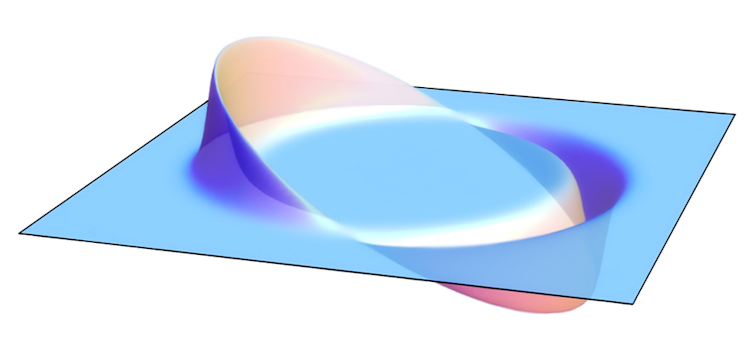
Compression and expansion
Physicists’ current understanding of spacetime comes from Albert Einstein’s theory of General Relativity . General Relativity states that space and time are fused and that nothing can travel faster than the speed of light. General relativity also describes how mass and energy warp spacetime – hefty objects like stars and black holes curve spacetime around them. This curvature is what you feel as gravity and why many spacefaring heroes worry about “getting stuck in” or “falling into” a gravity well. Early science fiction writers John Campbell and Asimov saw this warping as a way to skirt the speed limit.
What if a starship could compress space in front of it while expanding spacetime behind it? “Star Trek” took this idea and named it the warp drive.
In 1994, Miguel Alcubierre, a Mexican theoretical physicist, showed that compressing spacetime in front of the spaceship while expanding it behind was mathematically possible within the laws of General Relativity . So, what does that mean? Imagine the distance between two points is 10 meters (33 feet). If you are standing at point A and can travel one meter per second, it would take 10 seconds to get to point B. However, let’s say you could somehow compress the space between you and point B so that the interval is now just one meter. Then, moving through spacetime at your maximum speed of one meter per second, you would be able to reach point B in about one second. In theory, this approach does not contradict the laws of relativity since you are not moving faster than light in the space around you. Alcubierre showed that the warp drive from “Star Trek” was in fact theoretically possible.
Proxima Centauri here we come, right? Unfortunately, Alcubierre’s method of compressing spacetime had one problem: it requires negative energy or negative mass.
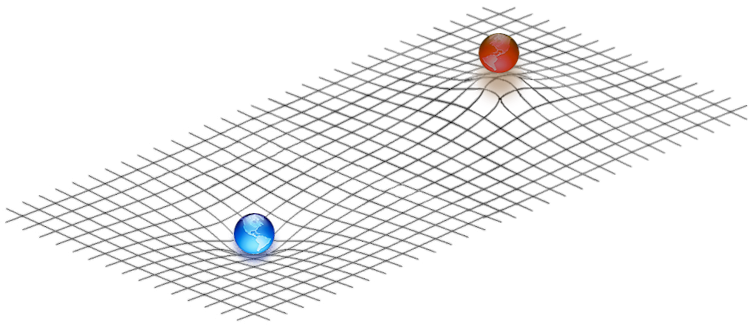
A negative energy problem
Alcubierre’s warp drive would work by creating a bubble of flat spacetime around the spaceship and curving spacetime around that bubble to reduce distances. The warp drive would require either negative mass – a theorized type of matter – or a ring of negative energy density to work. Physicists have never observed negative mass, so that leaves negative energy as the only option.
To create negative energy, a warp drive would use a huge amount of mass to create an imbalance between particles and antiparticles. For example, if an electron and an antielectron appear near the warp drive, one of the particles would get trapped by the mass and this results in an imbalance. This imbalance results in negative energy density. Alcubierre’s warp drive would use this negative energy to create the spacetime bubble.
But for a warp drive to generate enough negative energy, you would need a lot of matter. Alcubierre estimated that a warp drive with a 100-meter bubble would require the mass of the entire visible universe .
In 1999, physicist Chris Van Den Broeck showed that expanding the volume inside the bubble but keeping the surface area constant would reduce the energy requirements significantly , to just about the mass of the sun. A significant improvement, but still far beyond all practical possibilities.
A sci-fi future?
Two recent papers – one by Alexey Bobrick and Gianni Martire and another by Erik Lentz – provide solutions that seem to bring warp drives closer to reality.
Bobrick and Martire realized that by modifying spacetime within the bubble in a certain way, they could remove the need to use negative energy. This solution, though, does not produce a warp drive that can go faster than light.
[ Over 100,000 readers rely on The Conversation’s newsletter to understand the world. Sign up today .]
Independently, Lentz also proposed a solution that does not require negative energy. He used a different geometric approach to solve the equations of General Relativity, and by doing so, he found that a warp drive wouldn’t need to use negative energy. Lentz’s solution would allow the bubble to travel faster than the speed of light.
It is essential to point out that these exciting developments are mathematical models. As a physicist, I won’t fully trust models until we have experimental proof. Yet, the science of warp drives is coming into view. As a science fiction fan, I welcome all this innovative thinking. In the words of Captain Picard , things are only impossible until they are not.
- General Relativity
- Theoretical physics
- Interstellar
- Speed of light
- Albert Einstein

Program Manager, Teaching & Learning Initiatives

Lecturer/Senior Lecturer, Earth System Science (School of Science)

Sydney Horizon Educators (Identified)

Deputy Social Media Producer

Associate Professor, Occupational Therapy
The idea that characters can fly from planet to planet, or star to star, defying current science and technology, is central to science fiction. Although some of these ideas predated the space age, after the 1950s, fictional depictions of space travel needed to suggest conceivable ways to cross interstellar distances to seem plausible. Some authors suggested faster-than-light drives, hyper drives, jump drives, worm holes, and black holes.
Scientific understanding of light speed as an absolute natural limit derives from Albert Einstein’s publications on special relativity in 1905, confirmed by his work on general relativity in 1916. In classical physics, speed has no limits. But relativistic theory shows that mass increases with acceleration until mass becomes infinite at light speed. Yet author E. E. “Doc” Smith imagined spaceships traveling faster than the speed of light in his “Skylark of Space” stories. Smith’s cover story appeared in the same issue of Amazing Stories in 1928 that included Philip Francis Nowlan’s first short story about Anthony (later “Buck”) Rogers.
Within a couple of decades, the fictional idea of faster-than-light travel made intuitive sense to a public familiar with recent supersonic flights. In 1947, Chuck Yeager broke the speed of sound aboard the Bell X-1 Glamorous Glennis . Writers extrapolated supersonic speeds into the idea of spacecraft traveling at multiples of the speed of light. Frank Hampson’s British comic Dan Dare offered one of the earliest uses of faster-than-light travel. In 1955, he introduced interstellar travel in “The Man from Nowhere” trilogy. The technology was inherently alien, however, and faster-than-light travel was not featured regularly afterward. Forbidden Planet (1956) was the first film to depict a fictional faster-than-light spaceship created by humans. From the exterior, the C-57D ship was an undifferentiated flying saucer. After a loudspeaker announcement, however, the crew stood in “DC stations” that held them immobile while the ship slowed. By the mid-1960s, however, as both the United States and the Soviet Union made regular human spaceflights, science fiction audiences became more intuitively aware of the time that it took to travel in space.
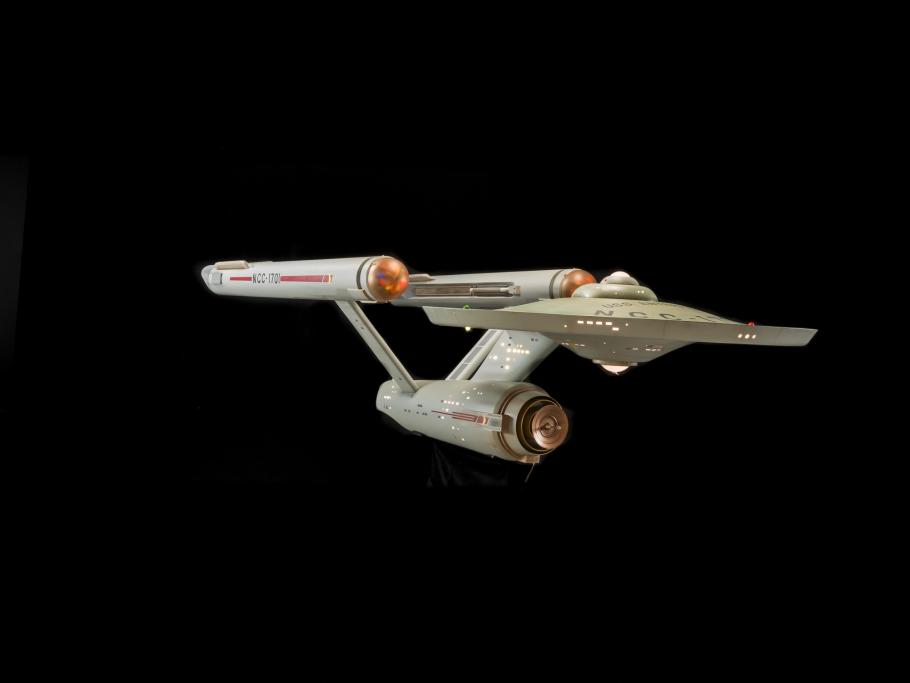
The U.S.S. Enterprise created for Star Trek (NBC, 1966-69) represented a major leap forward. Walters “Matt” Jefferies, a WWII flight engineer and private pilot, used “aircraft logic” to design a vehicle with components that visually communicated their purpose. With the two engine nacelles, Jefferies effectively invented warp drives, fictional engines that could propel the ship at multiples of the speed of light. As seen in Star Trek: First Contact (1996), the first flight of Zephram Cochran’s warp-capable Phoenix demonstrated the mark of a culture that was ready to participate in interstellar civilization. Jefferies’ design raised the bar for imagined vehicles. After Star Trek, undifferentiated flying saucers and flame-spewing pointed rockets largely disappeared from fictional depictions. Instead, imagined propulsion that bent space-time or traversed alternate dimensions become more prevalent.
Rather than just having the vehicles fly faster, some science fiction suggested traveling through or outside of normal four-dimensional space (including time), either by jumping within ordinary space, utilizing hyperspace, or exploiting natural or artificial shortcuts through space. Beginning in the 1940s, Isaac Asimov included jump drives in the short stories that later became his Foundation (1951) series of novels. Because fictional jump drives turn long flights into direct hops, allowing ships to disappear from one place and reappear in another, they facilitate storytelling without interrupting it. The reimagined Battlestar Galactica (2003) uses the same kind of travel but calls the mechanisms “FTL drives.”

A production model of the Millennium Falcon was on display at the Museum in 1998-99 as a part of the "Star Wars: The Magic of Myth".
The Star Wars universe postulates a hyperdrive, a computer-guided system that allows spacecraft to enter hyperspace at faster-than-light speeds and navigate to a successful exit at a distant destination. Solo: A Star Wars Story (2018) reveals that the extensive navigational maps and rapid calculating ability of the Millennium Falcon ’s hyperdrive computer are actually the downloaded memories of L3-37, a spirited and female-identified droid pilot.
The two-season program Buck Rogers in the 25th Century (NBC, 1979-1981) showed interstellar travel being accomplished using stargates. Four lights arranged in a diamond in space showed that the stargate had opened, offering access to hyperspace. A similar concept had a more physical presence in J. Michael Straczynski’s Babylon 5 (Syndicated & TNT, 1993-1998). In that show, external “jumpgates” shown using computer-generated imaging provided a physical infrastructure for generating stable vortices to hyperspace.
The idea of artificial space-time vortices as conduits drew power from speculation published in technical and popular literature. Speculation about wormholes must be distinguished, however, from black holes, which are real astronomical phenomena. Stories involving black holes often include time dilation. Einstein’s theories—including special and general relativity—explain that a person travelling near a massive gravitational field experiences time more slowly. The plot of director Christopher Nolan’s Interstellar (2014) employed time differences for dramatic purposes and also represented a giant leap in visual effects. To create the effect of the rapidly spinning black hole, theoretical astrophysicist Kip Thorne assisted the Interstellar production team. The resulting black hole appeared as a three-dimensional, spherical, hole in spacetime, drawing in all of the light around it. When the Event Horizon Telescope project imaged a real black hole in 2019, that image demonstrated how close to reality Interstellar ’s fictional imagination had come.
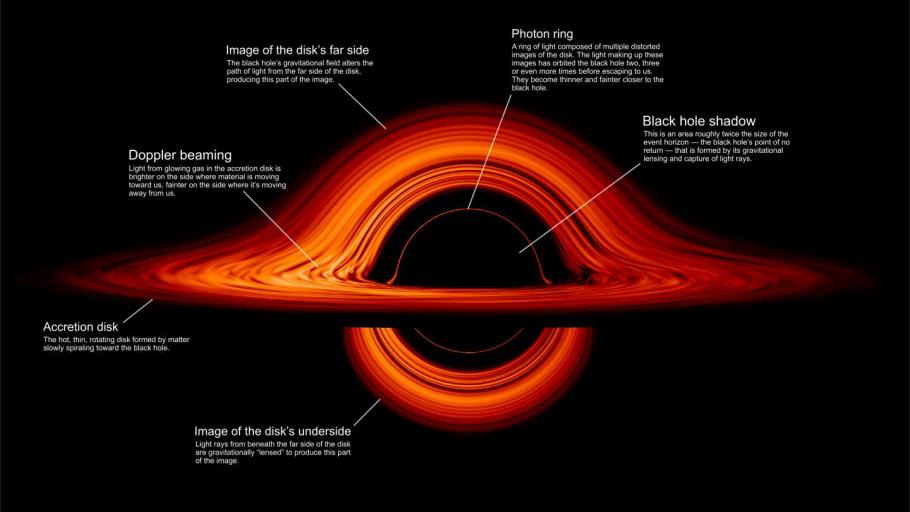
This explanation of the various aspects of a black hole shows the recent three-dimensional visualization.
Although writers have been imagining travel to space-based destinations for hundreds of years, the use of faster-than-light travel as a narrative device remains relatively young. As the sound barrier disappeared and the space age dawned, writers began imagining ways for interstellar travelers to cross the immensity of space. More important, audiences came to expect plausible explanations of faster-than-light travel to consider the stories credible.
Dr. Margaret A. Weitekamp is the Chair of the Museum’s Space History Department and author of “Ahead, Warp Factor Three, Mr. Sulu”: Imagining Interstellar Faster-Than-Light Travel in Space Science Fiction.” The Journal of Popular Culture 52 (2019), 1036-57.
We rely on the generous support of donors, sponsors, members, and other benefactors to share the history and impact of aviation and spaceflight, educate the public, and inspire future generations. With your help, we can continue to preserve and safeguard the world’s most comprehensive collection of artifacts representing the great achievements of flight and space exploration.
- Get Involved
- Host an Event
Thank you. You have successfully signed up for our newsletter.
Error message, sorry, there was a problem. please ensure your details are valid and try again..
- Free Timed-Entry Passes Required
- Terms of Use

- April 24, 2024 | 3.7 Billion Years Old: Oldest Undisputed Evidence of Earth’s Magnetic Field Uncovered in Greenland
- April 24, 2024 | Revolutionizing Renewable Energy: Innovative Salt Battery Efficiently Harvests Osmotic Power
- April 24, 2024 | 30 Times Clearer – Scientists Develop Improved Mid-Infrared Microscope
- April 24, 2024 | Shedding Pounds, Dodging Cancer: The Life-Saving Promise of Bariatric Surgery
- April 24, 2024 | Quantum Computing Meets Genomics: The Dawn of Hyper-Fast DNA Analysis
Breaking the Warp Barrier for Faster-Than-Light Travel: New Theoretical Hyper-Fast Solitons Discovered
By University of Göttingen March 11, 2021

Artistic impression of different spacecraft designs considering theoretical shapes of different kinds of “warp bubbles.” Credit: E Lentz
Astrophysicist at Göttingen University discovers new theoretical hyper-fast soliton solutions.
If travel to distant stars within an individual’s lifetime is going to be possible, a means of faster-than-light propulsion will have to be found. To date, even recent research about superluminal (faster-than-light) transport based on Einstein’s theory of general relativity would require vast amounts of hypothetical particles and states of matter that have “exotic” physical properties such as negative energy density. This type of matter either cannot currently be found or cannot be manufactured in viable quantities. In contrast, new research carried out at the University of Göttingen gets around this problem by constructing a new class of hyper-fast ‘solitons’ using sources with only positive energies that can enable travel at any speed. This reignites debate about the possibility of faster-than-light travel based on conventional physics. The research is published in the journal Classical and Quantum Gravity.
The author of the paper, Dr. Erik Lentz, analyzed existing research and discovered gaps in previous ‘warp drive’ studies. Lentz noticed that there existed yet-to-be explored configurations of space-time curvature organized into ‘solitons’ that have the potential to solve the puzzle while being physically viable. A soliton – in this context also informally referred to as a ‘warp bubble’ – is a compact wave that maintains its shape and moves at constant velocity. Lentz derived the Einstein equations for unexplored soliton configurations (where the space-time metric’s shift vector components obey a hyperbolic relation), finding that the altered space-time geometries could be formed in a way that worked even with conventional energy sources. In essence, the new method uses the very structure of space and time arranged in a soliton to provide a solution to faster-than-light travel, which – unlike other research – would only need sources with positive energy densities. No “exotic” negative energy densities needed.
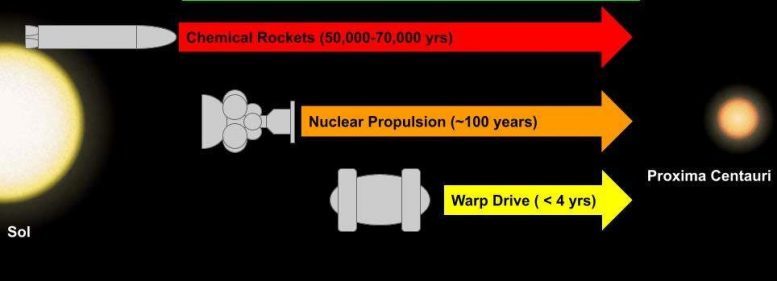
Image to show how long it would take different types of spacecraft to travel from our solar system to Proxima Centauri (the nearest known star). Currently, the only option would be to use a chemical rocket meaning a journey time of over 50,000 years. Credit: E Lentz
If sufficient energy could be generated, the equations used in this research would allow space travel to Proxima Centauri, our nearest star, and back to Earth in years instead of decades or millennia. That means an individual could travel there and back within their lifetime. In comparison, the current rocket technology would take more than 50,000 years for a one-way journey. In addition, the solitons (warp bubbles) were configured to contain a region with minimal tidal forces such that the passing of time inside the soliton matches the time outside: an ideal environment for a spacecraft. This means there would not be the complications of the so-called “twin paradox” whereby one twin traveling near the speed of light would age much more slowly than the other twin who stayed on Earth: in fact, according to the recent equations both twins would be the same age when reunited.
“This work has moved the problem of faster-than-light travel one step away from theoretical research in fundamental physics and closer to engineering. The next step is to figure out how to bring down the astronomical amount of energy needed to within the range of today’s technologies, such as a large modern nuclear fission power plant. Then we can talk about building the first prototypes,” says Lentz.
Currently, the amount of energy required for this new type of space propulsion drive is still immense. Lentz explains, “The energy required for this drive traveling at light speed encompassing a spacecraft of 100 meters in radius is on the order of hundreds of times of the mass of the planet Jupiter . The energy savings would need to be drastic, of approximately 30 orders of magnitude to be in range of modern nuclear fission reactors.” He goes on to say: “Fortunately, several energy-saving mechanisms have been proposed in earlier research that can potentially lower the energy required by nearly 60 orders of magnitude.” Lentz is currently in the early-stages of determining if these methods can be modified, or if new mechanisms are needed to bring the energy required down to what is currently possible.
Reference: “Breaking the warp barrier: hyper-fast solitons in Einstein–Maxwell- plasma theory” by Erik W Lentz, 9 March 2021, Classical and Quantum Gravity . DOI: 10.1088/1361-6382/abe692
More on SciTechDaily
Quantum magic squares cannot be as easily characterized as their “classical” cousins.

Can We Make Opioids Less Addictive? [Video]

Meltwater Pulse 1A: Melting Ice Sheets Caused Sea Levels to Rise Up to 18 Meters

Stromatolites – Fossils of Earliest Life on Earth – May Owe Their Very Existence to Viruses

Giant Millipedes “As Big as Cars” Once Roamed Northern England – “Complete Fluke of a Discovery”
Did a black hole eating a star generate a neutrino new research casts doubt.

America Must Prepare for COVID-19 Related Drug Shortages
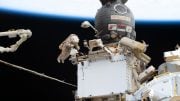
Cosmonauts Begin Spacewalk To Move Roscosmos Radiator on Space Station
22 comments on "breaking the warp barrier for faster-than-light travel: new theoretical hyper-fast solitons discovered".
“Sufficient Energy” This already exist in the form of Element 115. If the Unauthorized Black Projects are ever revealed, word on the grapevine says its actually instantaneous. Lets go to Alpha Centaur i.
If we had that kind of energy on earth, everyone would know.
If only because that much energy in one place would have as much gravity as Jupiter.
Proposed mechanism is a propagation of a distortion of spacetime of a particular form. Thus it is ultimately very much like propagation of gravitational waves. However gravitational waves propagate with speed of light. Therefore I don’t see how it may be possible.
“Take us Out… Chekov”
The biggest form of untapped energy is at rest and stable energy. We only think of energy in it’s transitions. If we would convert the energy of stable space it is limitless.
Useful work of any kind has always, not only by man but by nature as well, only been accomplishable by exploiting an energy gradient (i.e. harnessing the movement of energy from where it is plentiful to where it is scarce). That’s what entropy is.
Find a way around that and we won’t *need* warp drives, we can simply create anything and everything we could ever want from nothing, forever.
You mean element 151…
IDK. I think it is about TIME… to find a horse of a different color. The protocols heron defined have “designed” a wonderful “horseshoe” (RELATIVELY speaking) and are busy trying to fit it to an elephant just because it’s in the ROOM: where time and space are limited… TIME to leave the womb… er… ROOM. Which is to say: Star Trekking is a fantasy, a phantasm and a FICTION devised inside a “boxy” Universe, whose PHYSICS seem to conform to the BIAS of Mortality (TIME is the limiting factor). It engenders HASTE in seeking a solution: We are “on the run”, desperately looking for a way to boldly go where no HUMAN has gone before. Good LUCK with that. Back to the Horseshoe, in want of a “NAIL”. As DANTE writ above the GATES of Hell: “Abandon ye all HOPE who enter here:” Where strayeth the MIND the FEET will follow. But it’s not about Feet, or Miles or Light Years. SINGULARITIES ALL: Infinite acceleration = Infinite ENTROPY. One is effectively DEAD in the water, while the proverbial WORM in the HOLE has a feast. It’s about standing still in the STREAM of Time, while SPACE flows on around ONE: A STREAM where the banks are in motion as well. It’s about being IN the FIELD and NOT UNDER IT. No need for flesh-liquifying SPEED. Think about it… In the meantime, ring up ACME Fireworks Inc. Ask for the “Wile E Coyote” Package. Next stop: Alpha CENTAURI… now passing URANUS on the way out of here. WARP NINE MISTER WARF. MAKE IT SO. Walk the World Round and wind up where you started from. FEET again. It is the ultimate Circular Argument of Intent in a two-dimensional UNIVERSE, OUTSIDE of TIME. The FABRIC of a DREAM…
A very small craft might be fitted with a very high power drive. A craft of 100m radius is mentioned. Eventually we will miniaturize the craft.
I totally agree with you because no way would time ever change no matter how much energy is used in traveling. The most important aspect of this research as I’m working on is understanding hot and cold. Gravity and acceleration of planet and stars to then making a mechanism that can trick the universe into believing the mechanism behavior is indeed faster heavier or lighter then what would be expected for such a device on Earth. Artificial takes new meaning with my studies and I wish you all the best likewise.
Warp drive or not we are not ready until we are one we will never understand we will never be welcomed to intelligent beyond earth I believe ther are watching.
At the present time nothing is faster than light, but there is! It’s always been here watch! The Sun’s light takes about 8 minutes to arrive to earth. If I (THINK) about the sun to earth I have beat the light travel. Human thought is faster than light. Just for thought. Now let’s get down to business. WARP DRIVE can be achieved. Anti-gravity is negative energy. Loaded in darkness of space. What u need in space is large amounts of gravity to pull or accelerate. Warp Drive is a push pull in a sense. A laser SCOPE can achieve this. Space/time bends light as u know, riding on a laser beam moving to a point of reference (sun) gives u the positive gravity neccessary inside the bubble to move. In theory the light is behind you. Still within einstein’s theory.more to say later see ya
The illustration atop this page is an excellent example of WHY artists impressions are NOT useful is the discussion of science.
Put most simply : there is no data, yet there IS an illustration… of SOMETHING, that means nothing. What is there to learn from this?
We Warp Drive manufacturing, our fission-annihilation antigravity propulsion accelerate to lightspeed, but by nuclear annihilation reaction generate high-density time-space, so from outside observation, we traveling on higher speed. The best is to travel outside of the galactic disk for maximum speed. To understand advanced physic is necessary to first understand the Theory of Relativity. Sped of light is constant only in the frame, outside dependant on the speed of time.
Chris m exactly..rest energy would be the best for getting us out of this area..it’s the ink pen vs pencil problem.spend tons of cash on writing with a pen or use a pencil for $.05.we already have the oxygen thing worked out..I say we just jump on in and figure it out as we go haha
Why not look into the idea like the Enterprise u already have this ISS up there why not try to buid a space hanger to build the ship like the Enterprise in it we have the technology to do it and while ship was getting built u cold work on the warp drive engines to power it this is the 21st century we should be thinking on lines like that im not saying theres vulcans or klingonns out there but with a ship like that we might get to see if we are alone in this galaxy or not
This would also allow for sub-light speed as well with I am assuming lesser energy requirements. Works be with losing for just to get around the solar system faster
How do we stop this spaceship?
by “breaking” the warp bubble in advance by a few nano seconds. lowering the space ship to sub light speeds temporarily.
Just traveling at light speed would be an accomplishment, yet no one talks about sailing on waves of gravity which would take much less energy. Even though warp speed is faster, we should probably walk before we run.
faster than light propulsion and anti-gravity
https://pronewsreport.com/2021/05/31/antigravity-flying-saucer-for-solar-system-exploration/
Antimatter for Antigravity and Faster than Light Propulsion
Leave a comment Cancel reply
Email address is optional. If provided, your email will not be published or shared.
Save my name, email, and website in this browser for the next time I comment.
10 Sci-Fi Faster-Than-Light Systems
Albert Einstein may have proven faster-than-light travel to be impossible, but the rules of physics certainly haven't stopped sci-fi creators from inventing plausible-sounding ways to travel to the stars. Here are the 10 most awesome systems of faster-tha

Albert Einstein may have proven faster-than-light travel to be impossible, but if I were grading his papers I'd simply say, "Try harder." The rules of physics certainly haven't stopped sci-fi creators from inventing plausible-sounding (or infinitely improbable) ways to travel to the stars. Here, then, are the 10 most awesome systems of faster-than-light travel in sci-fi.

Found in: Star Trek
Warp drive is surely the most famous way to get your butt to a distant star. But, as with anything related to Star Trek, there's not a simple explanation. The basic story is that if you combine matter and antimatter fused with some dilithium, you can create a subspace bubble that exists outside the normal fabric of space–time. With warp plasma spewing out of a ship's nacelles you can now propel yourself faster than light to varying degrees (the famous "warp factor" you'll often hear Starfleet captains shouting about).
Maintaining a warp drive ain't easy, which is why every iteration of Star Trek had an (awesome) chief engineer and a set with a big blue glowy thing. For that reason alone it is at the top of the list.
Found in: Star Wars
There is no clearer distinction between the Stars ( Trek and Wars ) than in the way they present technology. Star Trek will beat you into submission with its technobabble until you finally relent and decide that this all must make sense. Team Lucas, on the other hand, will marvel you with whiz-bang wonderment until you accept that this galaxy far, far away runs on magic.
The Millennium Falcon and other ships travel across enormous distances using hyperdrive, which is a system maintained—if you follow Chewbacca's model—by banging on the ship's interior plating until, finally, you go fast. If one looks under the hood (i.e., reads some of the expanded universe books), you'll learn that hyperdrive technology involves collecting gamma radiation, fusing it in a hyperdrive motivator, and maintaining a stable corridor of space with a null quantum field generator. It also makes all the white stars go streaky—a total freakout for 1977.
Plausibility Factor: An 8 also, for two reasons. One, it is important to maintain detente between the Star Trek and Star Wars camps. Two, we'd like to point to the work of Mark G. Millis, a NASA alum and founder of the Tau Zero Foundation who has written extensively on the possibility of "forms of propulsion where the fundamental properties of matter and spacetime are used to create propulsive forces anywhere in space without having to carry and expel a reaction mass."
The Infinite Improbability Drive
Found in: The Hitchhiker's Guide to the Galaxy
It's what's beating within Zaphod Beeblebrox's commandeered ship Heart of Gold. The Infinite Improbability Drive is one of the more purely mathematical systems of faster-than-light travel, making quantum calculations determining the least likely point in space and then suddenly sending you there. Hitchhiker's author Douglas Adams is a little vague as to whether this is a propulsion or teleportation system, but, then again, quantum mechanics is a little vague, too. (In the radio and TV version it looked like a running shoe.)
Adams said he came up with the infinite improbability drive after he'd written himself into a corner. Any rescue he devised seemed improbable, so he therefore decided to pick the most improbable.
Plausibility Factor: N/A. You really want to debate the plausibility of something called the Infinite Improbability Drive? Adams's outrageous creation doesn't deserve to be confined to a 1 to 10 scale.
Found in: Battlestar Galactica (new continuity)
While the mechanics of Battlestar 's FTL "jumps" are left somewhat to the imagination, its tactile nature is a perfect example of why BSG is so awesome. Deriving its power from rare tylium ore, the FTL drive can essentially pick you up and plop you down at any point in space, provided you have advanced tracking facilities and the time to plot your course. Indeed, the Cylons—being machines—had better computers and therefore could get the jump, if you will, on the Colonials. In cases of extreme emergency, one could make a "blind jump"—basically slamming the Go button, asteroids and space debris be damned—but you need to be as gutsy as Michelle Forbes's Admiral Cain to do such a thing.
Most of the time a jump is preceded by a "spooling-up," in which the camera angle gets all funky and distorted, oftentimes causing noobs to get sick. Also, using the FTL too much can give your ship metal fatigue.
Plausibility Factor: The science seems suspect, but major points for adding in all the difficulty of upkeep. Let's give it a 5.
Found in: Doctor Who
The BBC may not have been a big-budget operation when it created Doctor Who, but it recognized that space and time were irrevocably connected. So the jumping vessel, the TARDIS, didn't just set you down somewhere—it set you down somewhen.
(Also, the TARDIS is bigger on the inside than the outside—but that's a different article.)
The Time and Relative Dimension in Space machines used by the Time Lords don't all look like an antiquated police box (the one on the show has a faulty chameleon circuit.) The ships are actually grown, drawing their power from an artificial singularity known as the Eye of Harmony. They are technically alive, and in one episode, the consciousness of the TARDIS entered a humanoid. Yeah, we're getting into some weird territory here.
Plausibility Factor: Very low. But we'll give it a 2 because it integrates time and space and, well, we used to watch a lot of public television.
Holtzman Drive
Found in: Dune
If you want to travel far out, you have to get far out. Frank Herbert's Dune books make great use of the Holtzman Effect, a grouping of scientific phenomena that can, among other things, fold space itself. That's right—why travel off to a distant star when you can make that distant star come to you? (Kinda.)
What's neat is that the Spacing Guild doesn't need just the advanced technology of a Holtzman drive, but also a pilot who is hopped up on the Spice Melange and can navigate through patterns in foldspace. In this world, then, the designated driver is the one who's the highest. In David Lynch's film version (which many purists reject), a giant space slug shoots squiggly things at a glowing gold box to initiate the drive. Cinema!
Plausibility Factor: This is all rather heavy, but it is hard not to salute Herbert for thinking of a solution from an unusual point of view. Let's go with a 4.
Found in: Farscape
Some people name their cars and even talk to them. The Farscape universe takes the next logical step: There are a whole group of biomechanoid ships called Leviathans. They have personalities and thoughts and will adapt and grow to fit the need of their crew.
One of their killer apps is something the Builders gave them called Starbursts. It is the ability to travel at superluminal speeds in cases of extreme urgency. It is essentially a fight-or-flight mechanism, but heavy on the flight. Using a Starburst will not only tucker out a Leviathan, but also wipe all of its navigational data for a spell.
Plausibility Factor: The awesome factor for Starbursts is high. But considering I can't even get one of those automated vacuum cleaners to work, I think we're a long way from this. Let's say 3.
Kearny-Fuchida Drives
Found in: BattleTech
According to the mythos of the BattleTech tabletop/computer/video games, novels, comics, and anime shows, the principles behind faster-than-light travel will be discovered at Stanford University in just six years. (Get ready, people!)
About a century later, further work will be done on the theories of Drs. Thomas Kearny and Takayoshi Fuchida to create hyperspace energy fields using large, superconductive masses of titanium and germanium. Sounds easy enough, but the system needs huge amounts of energy, so solar sails are used for time-consuming power-ups from stars. (And there are fewer and fewer full service stations!) Furthermore, unlike with other systems, you just can't jump anywhere—gravitational pull can make "reentry" unstable, so coordinates must be far above a star's ecliptic path. Use of the K-F Drive also does a number on the subatomic particles of the effected region.
Plausibility Factor: For the very fact that using the drives causes so much trauma, let's give this one a 6.
Conjoiner Drives
Found in: Revelation Space
A mysterious defense system preventing the development of faster-than-light travel is one of the key arcs in Alastair Reynolds's fantastic (and ongoing) Revelation Space books. The Earth-descendant peoples (some more mechanically augmented than others) travel in ships called Light Huggers that, as the name suggests, travel at nearly the speed of light.
What makes the Light Huggers so cool (specifically the Nostalgia for Infinity, a ship at the heart of many adventures) is how the relativistic fields create a Tarantino-esque storytelling timeline, even if individual characters just think they are traveling in a straight line.
Light Huggers derive their power from Conjoiner Drives that contain a tiny wormhole reaching back in time and drawing power from quark–gluon plasma created by the big bang. Only a certain number of these wormholes exist, so the technology cannot be replicated—no one remembers how to build them or where they came from.
Plausibility Factor: Alastair Reynolds had a career as an astronomer in the European Space Agency prior to writing books. He talks a good game, so I'll give him a 5 and say he's on to something.
Found in: DC Comics
We haven't talked that much about wormholes. And that's fine with me. In most science fiction wormholes are just stumbled upon—it seems to be an easy fix to fill in plot holes.
However, wormholes are plentiful in sci-fi, so they deserve their nod. But if I'm gonna wimp out and travel this way, I'm ignoring everything from the titular Stargates to the Taelonian Portals of Earth: Final Conflict and going to take a boom tube.
First seen in Jack Kirby's tripped-out New Gods books, the boom tube was a wormhole that "stemmed from the waves of the mind" and could zap you from places like Apokolips and New Genesis to Earth. This has since been altered to something far less fanciful—boom tubes are currently powered by a "mother box." Recently, Superman, Batman, and Wonder Woman used one to fight Granny Goodness and the Female Furies and rescue Kara Zor-El from Darkseid. Hey, you asked.
Plausibility Factor: I'm going with a 7. Every article you read about how faster-than-light travel is impossible contains an asterisk that says "unless we somehow discover wormholes." Scientists seem to think that wormholes aren't the craziest idea in the multiverse, so I'm holding out hope that I'll make it Proxima Centauri after all.
.css-cuqpxl:before{padding-right:0.3125rem;content:'//';display:inline;} TV .css-xtujxj:before{padding-left:0.3125rem;content:'//';display:inline;}

Save Up to 50% Off Max and More Streaming Services

Get Pedro Pascal's Jacket From ‘The Last of Us’

'The Lord of the Rings: The Rings of Power' Facts

Things You Didn't Know About 'House of the Dragon'

What 56 'Game of Thrones' Actors Look Like IRL

Everything We Know About the Latest 'Star Trek'

Wait, ‘Stranger Things’ Season 4 Isn’t Over Yet?

'Rings of Power' Reveals Its Epic Teaser Trailer

10 Best Action Figures for Play and Display

George R.R. Martin Loves 'House of the Dragon'

Ridiculously Hard 'Jeopardy!' Questions
- The Magazine
- Stay Curious
- The Sciences
- Environment
- Planet Earth
How Humans Could Go Interstellar, Without Warp Drive
Faster-than-light (ftl) travel is possible..
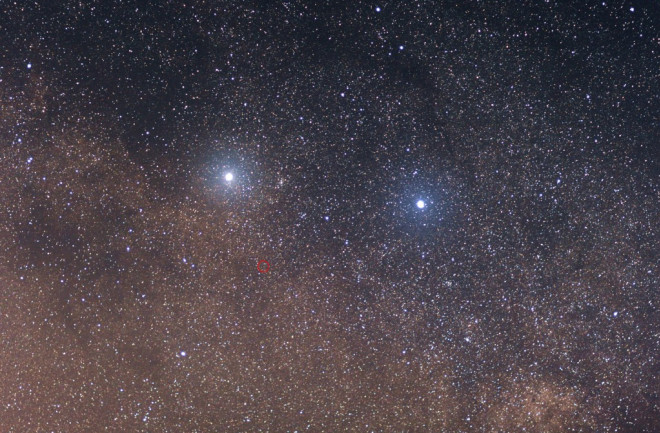
The field equations of Einstein’s General Relativity theory say that faster-than-light (FTL) travel is possible, so a handful of researchers are working to see whether a Star Trek -style warp drive, or perhaps a kind of artificial wormhole , could be created through our technology.
But even if shown feasible tomorrow, it’s possible that designs for an FTL system could be as far ahead of a functional starship as Leonardo da Vinci’s 16th century drawings of flying machines were ahead of the Wright Flyer of 1903. But this need not be a showstopper against human interstellar flight in the next century or two. Short of FTL travel, there are technologies in the works that could enable human expeditions to planets orbiting some of the nearest stars.
Picking the Target
Certainly, feasibility of such missions will depend on geopolitical-economic factors. But it also will depend on the distance to nearest Earth-like exoplanet. Located roughly 4.37 light years away, Alpha Centauri is the Sun’s closest neighbor; thus science fiction, including Star Trek , has envisioned it as humanity’s first interstellar destination.
In 2012, a planet was identified orbiting closely around Alpha Centauri B, one of three stars comprising the Alpha Centauri system. Three years later, astronomers were unable to find that same planet, but if it exists it would be too hot for life anyway. What we really want to know is whether planets exist further out from the two main stars, or whether their much smaller, dimmer companion star, Proxima Centauri, located just 4.24 light years from Earth, has planets of its own.
Very soon, these questions will be answered by the James Webb Space Telescope (JWST) that NASA will be launching into space in 2018, and by other instruments that will follow, instruments capable of more than merely detecting a planet’s presence. They will also be able to read the chemical composition of planetary atmospheres.
Imagine this: If there’s an Earth-like planet around Alpha Centauri or another nearby star system, astronomers will know about it within a decade or two — certainly long before we can build a ship like the Enterprise .
Maybe we could consider flying under the speed of light.
Propulsion
It is not widely known, but the US government spent real money, tested hardware and employed some of the best minds in late 1950s and early 60s to develop an idea called nuclear pulse propulsion .
Known as Project Orion , the work was classified because the principle was that your engine shoots a series of “nuclear pulse units” — atomic bombs of roughly Hiroshima/Nagasaki power — out the back. Each unit explodes and the shockwave delivers concussive force to an immense, steel pusher plate, which is connected to the most immense shock absorber system that you could imagine.
The researchers calculated that the ship could reach five percent the speed of light (0.05 c ), resulting in roughly a 90-year travel time to Alpha Centauri. The Nuclear Test Ban Treaty of 1963, which forbade nuclear explosions in the atmosphere, and the Outer Space Treaty of 1967, which forbade nuclear explosive devices in space, effectively ended Orion .
In his epic TV series Cosmos, Carl Sagan noted such an engine would be an excellent way to dispose of humanity’s nuclear bombs, but that it would have to be activated far from Earth. But back when Orion was being funded, amazingly, the plan was to use the nuclear pulse engine even for launching the vessel, in one massive piece, from the surface of Earth. Suffice it to say it does not seem likely that we’ll every build a nuclear pulse ship, but it’s something that we already have the technology to build.
A Cleaner System
But what about a less explosive, cleaner propulsion system that could achieve the same end? The British Interplanetary Society took on this goal in the 1970s with Project Daedalus . Named for the inventor from Greek mythology who built wings to escape the island of Crete, the design was based on projected development of inertial confinement fusion (ICF), one of two main strategies for generating nuclear fusion energy on Earth.
The other strategy is magnetic confinement fusion (MCF), and similar to ICF, designs exist for adapting MCF to space propulsion . Like Orion , a Daedalus craft would have to be rather large. But using deuterium and helium-3 (obtained from the lunar surface, or from Jupiter’s atmosphere) as fuel, Daedalus craft could reach 0.12 c , cutting travel time to Alpha Centauri to something like 40 years.
There are other ingenious ideas, such as the Bussard ramjet that could approach the speed of light, but the size of the engines and technological gaps that we must fill become so large that they may not seem easier than warp drive. So let’s limit our discussion to capabilities up to the neighborhood of the 0.12 c of Daedalus as we consider what form a human interstellar voyage might take
The Generation Starship
It has been said that if you want to go fast, go alone, but if you want to go far, go together. This proverb characterizes the strategy of building an interstellar ship so large that you don’t worry so much about the travel time.
Effectively, the ship is a space colony. It contains a large population — current estimates are that a minimum of tens of thousands of colonists are needed for a healthy gene pool — and all that is needed for people to live comfortably, but it follows a trajectory out of the solar system. Ideas for an interstellar ark taking millennia to reach a destination date back to the fathers of the Space Age — Russia’s Konstantin Tsiolkovsky and America’s Robert Goddard— — the idea really set sail with mid 20th century science fiction writers.
In a two-part novel series written in 1941, Robert A. Heinlein wrote of a vessel that took so long to reach its destination that the people aboard had forgotten they were on a ship. Instead, they believed the large craft to be their natural world.
Sending colonists on a voyage lasting centuries or millennia raises social questions, such as whether it is ethical to commit unborn generations to live out their lives in transit between planets.
10,000 years is a rather long time and means a large number of generations to commit to the interstellar void. But if we’re talking 40 or even 90 years, that’s probably more palatable to many more people. Still, it raises questions as to who would volunteer for such an expedition.
But what about people with shorter attention spans and what if we have no will to build enormous, moving colonies?
Here’s another science fiction strategy: sending cryopreserved human embryos, or gametes (ova and sperm) into deep space. Upon reaching the destination star system, the embryos would be developed. This would require an artificial uterus, which we don’t have yet, but like fusion, here we’re also talking in terms of a matter of decades.
At some point in this century, motherless birth could become a technological reality. Theoretically, we’ll be able to send cryopreserved embryos through space, for centuries if needed due to propulsion limitations, and set them to develop into full-term infants on the new planet.
Then, all you need are robot nannies to raise and educate the infant colonists. And if there’s one area of technological progress that people are supremely confident will keep advancing at warp speed, it’s robots and artificial intelligence.
The egg ship concept is loaded with ethical questions, which can be hashed out in the comments section.
Suspended Animation
As technically ambitious as it may sound, medical science is making incremental progress toward a safe form of human hibernation.
Currently, it’s routine to lower a patient’s body temperature intentionally by a few degrees, thereby inducing a mild hypothermic coma, following cardiac arrest. This enables the brain to recover after oxygen has been cut off, whereas remaining at normal body temperature results in what’s called reperfusion injury.
Not routine yet, but now under clinical trials, trauma surgeons are cooling patients down to just above freezing temperature in cases of severe blood loss. This is true suspended animation . It’s done just for two hours, or possibly three, stalling death so that injuries can be repaired and blood replaced, but the person is basically hibernating during that time.
With incremental progress, the procedure may eventually be extended to time frames of many hours, and eventually days or weeks to treat other conditions. Perhaps, in time, we’ll put people to sleep long enough, and with enough supervision by computers, to slumber away for an entire interstellar voyage the way you now doze off for a transoceanic flight.
- space exploration
- human spaceflight
- spaceflight
Already a subscriber?
Register or Log In

Keep reading for as low as $1.99!
Sign up for our weekly science updates.
Save up to 40% off the cover price when you subscribe to Discover magazine.
Screen Rant
Ftl: the 10 best versions of space travel in sci-fi movies & shows, ranked.
Science-fiction films and television series often mess around with the concept of FTL space travel, and these ten franchises clearly did it best.
As avid viewers of science-fiction films and television series, the fictional practice of space travel fascinates us. Seeing how different sci-fi universes handle faster-than-light travel is endlessly entertaining.
RELATED: The 10 Most Bizarre Weapons In Sci-Fi Movies, Ranked
What is so great about this particular aspect of sci-fi is how different franchises will handle it. They'll call FTL travel by different names, use varying pieces of technology to utilize it, and be totally unique in how they make it appear. For today, we're going to go over the best sci-fi methods of FTL travel. Read on if you want to find out which movies and series handled it the best.
Gravity Drive/Artificial Black Hole - Event Horizon
Younger viewers might not recall the film Event Horizon . It was a thrilling sci-fi romp that involved demonic horrors leaking onto a ship thanks to some FTL travel gone wrong. The ship is using an experimental gravity drive meant to reduce the time it takes to travel through space by creating an artificial black hole for portal purposes. Unfortunately for the crew of the ship, this little hole in space-time leads directly to hell. And we mean that quite literally. This mode of FTL travel gets bonus points for being directly involved in the film's plot complications.
Boom Tube/Mother Box - Justice League
Call it what you will, this device is just one of those insane FTL inventions made to masquerade as teleportation. A Boom Tube is used to create openings across space and time that people, vehicles, and armies can use to traverse great distances.
RELATED: 10 Best Sci-Fi Movies About Artificial Intelligence, Ranked
And by great distances, we mean the space between universes. DC Comics struck gold with this idea because how else were the denizens of Apokolips and New Genesis supposed to terrorize Earth? Boom Tube technology featured heavily in the DC film Justice League , and if the film gets a sequel, you can bet it will involve more Mother Boxes.
FTL Jumps - Battlestar Galactica
Though Battlestar Galactica didn't have a snazzy name for their faster-than-light travel (they just called them "FTL jumps," really), this mode of transportation boosted itself up on this list thanks to the random chance it uses. For those of you who haven't seen the hit sci-fi show, just know that luck has more to do with "jumps" than coordinates. And for those of you who have seen the show, we will never listen to the song "All Along the Watchtower" in the same way ever again.
Shock - Dead Space
Granted, Dead Space started as a video game, but it has an animated film, too, so we thought we'd include it here anyways. Plus, its FTL travel is delightfully named. In Dead Space , space ships travel using ShockPoint drives. This means that when a ship is about to travel faster than the speed of light, crew members will frequently say, "We're about to shock out."
RELATED: 10 Best Sci-Fi Movies With Peaceful Aliens
That's a colloquial way of stating that the ship is about to enter ShockSpace, which functions as a sort of space that isn't space. It's like a bubble in space and time. For the simple pleasure of saying "shock out," we had to include Dead Space's method of FTL travel on this list.
Jumps - Guardians Of The Galaxy
The Marvel Cinematic Universe has its own method of FTL travel, but we wouldn't have included it if it hadn't been for the insane scene in Guardians of the Galaxy Vol. 2 . Yondu, Rocket, Kraglin, and Groot make 700 "jumps" through space-time in order to reach the rest of the team on Ego's planet in time. That many jumps takes a hilarious toll on their bodies, distorting them in funny, bubbly ways. It might be a spot of juvenile humor, but hey, if FTL travel can make you laugh, we count that as a win.
Slipspace - Halo
Like with Dead Space , Halo is primarily a video game, but since it has some live-action features and specials within its franchise, we thought we'd sneak it on here anyway. Halo's method of FTL travel is called Slipspace.
RELATED: 10 Of The Best Sci-Fi Space Ships Ever, Ranked
Using Shaw-Fujikawa Drives (a fictional drive named after a fictional person in the Halo universe), space ships will enter Slipspace at one point, and then exit it after having traveled vast distances. Random jumps into Slipspace can be made, but watch out. You could find yourself next to a Halo ring if you try it.
Black Holes - Interstellar
Black holes are terrifying things when you stop to think about it, but in Christopher Nolan's mind-bending film Interstellar , human astronauts use them to travel faster than the speed of light. Though the movie's black-hole travel is not named anything fancy, it earned a high spot on this list thanks to its unconventional depiction in the film. Plus, the amount of thought that goes into comprehending the differences in time for those in the black hole and those left on Earth is gargantuan. In fact, it's an integral part of the film.
Lightspeed/Hyperspace - Star Wars
No one who thinks of FTL travel in film can help but remember the streaks of stars whizzing past the Millennium Falcon as it made the jump to hyperspace. It is perhaps the most iconic form of FTL travel, especially in terms of visuals. Plus, the colloquial term "lightspeed" just sounds perfect for describing the mode of transportation. No other film has made FTL travel sound so cool and catchy as Star Wars . Instead of the gut-wrenching terror you would feel if you actually hurtled through space at the speed of light, all you feel is a thrill of excitement.
Warp - Star Trek
While it might attract the ire of Star Wars fans everywhere, Star Trek's warp speed had to be higher on the list at the very least because it was made years before the first Star Wars film. Any Trekkie worth their salt knows the importance of the warp engine to travel on the final frontier. You can't go where no man's gone before traveling on impulse engines alone, right? If you want to have a truly interstellar voyage, you've got to go warp.
Infinite Improbability - The Hitchhiker's Guide To The Galaxy
The zaniest, unlikeliest, and, therefore, best mode of FTL travel has to go to The Hitchhiker's Guide to the Galaxy's Infinite Improbability Drive. This strange device of propulsion was made to travel to every single point in the universe before depositing the lucky ship it was housed in exactly where it wanted to go. This happens in the mere nothing of less than a second. Not much is known as to how it does this, but, suffice it to say, improbabilities have a lot to do with it. And when it comes to ranking FTL travel in a science-fiction world, the acknowledgement of how improbable the whole venture is makes Infinite Improbability the coolest means of transportation.
NEXT: Top 10 Cutest Sci-Fi Creatures, Ranked
Dan Koboldt
Writer, blogger, and genetics researcher
Faster-than-light (FTL) Travel in Science Fiction
July 29, 2016 by dankoboldt 2 Comments
Please join the mailing list to be notified every time new content is posted.
About the Expert: Jim Gotaas
In what seemed like a natural progression from an early interest in both science fiction and physics, Jim passed through the gates of a PhD in Physics to a career in research and teaching physics, with occasional stops along the way to enjoy astrophysics and space travel. Unfortunately, the attempt to combine research and teaching with writing SF on the side turned out to be too tough. But having now served his time as a professional physicist, he’s happily writing SF as a hobby.
Why do we want Faster Than Light (FTL) Space Travel?
The real universe (or even just our galaxy) is a big place. The fastest spacecraft NASA is currently actively planning is the Solar Probe Plus, designed to launch in 2018 and approach the sun, with a maximum speed of about 200 kilometers per second. At that speed, we could go from the Earth to the Moon in about half an hour. Pretty fast, huh?
But even if our crew and spaceship could routinely reach and keep at that speed, it would still take us roughly 6400 years to reach the nearest star, Proxima Centauri. There has been a lot of speculation about different forms of slower than light (STL) travel that could cut that time substantially, but if we accept Einstein’s special relativity, the best we ever hope for is just over four years of travel to reach just the nearest star, and that costing a lot of energy. Without FTL, four years to our nearest neighbor is probably too long for most stories. (Although there are a lot of interesting classic stories that are based on various types of STL, where physics isn’t actually broken, but a lot of advanced engineering work is needed!)
The Basics of FTL
Basically, there ‘ain’t no such thing’. Sorry.
Specifically, most physicists and engineers would say that FTL is impossible if you believe modern physics. Einstein’s Special Theory of Relativity states that it would take infinite energy for a material object (like a spaceship!) to travel just at the speed of light. And that infinite doesn’t mean just lots and lots and lots of energy. It means literally more energy than exists in the finite universe. This means that the speed of light is the absolute speed limit in our reality.
Another consequence of FTL in terms of special relativity is that it can lead to the breakdown of cause-and-effect. This is too complicated to really go into here, but basically special relativity says that every person (technically, frame of reference) moving with a different speed sees the universe differently, even down to the order in which things take place. In particular, if FTL occurs, there will be some people who ‘see’ the ship arrive before it’s left. Another way of looking at this is that any FTL device can also function as a time travel machine!
So as far as current real science is concerned, we’re stuck without FTL. (There are possibly some loopholes, which we’ll mention below.)
But from the earliest days, science fiction has wanted to play out on the big stages, so all but the most hard-core SF purist is willing to bend the rules a bit for the sake of a good story involving galactic empires. To that end science fiction has come up with a number of imagined methods for FTL, some with more scientific plausibility than others. If you want your story to sound scientific, you’ll need to face up to the problem of real interstellar distances, but be prepared to wave your hands a bit and mutter the accepted ‘magic words’ that show that you’re willing to play the game properly.
There are many dozens of different names and ideas used for FTL technology in science fiction, but we’ll take a brief look at four main types.
With the exception of the two of you giggling up there at the corner on the ceiling, everybody in sci-fi is familiar with Star Trek and its warp drive through the use of ‘dilithium crystals’. Depending on which generation you belong to, the special effects vary, but the basic idea is the same. You start up your warp drive and break through the light barrier, allowing you to have adventures all over the galaxy (and in some cases, even beyond). There’s usually no real scientific justification for this, but at least you’re facing up to the whole light-speed limit issue. This is now an accepted trope in SF, and you’re allowed to switch it on yourself in your stories, although calling it ‘warp drive’ may bring up images of Star Trek . If you want to spend a little more time waving your hands about and sounding more expert, you can name your own version of FTL drive, or simply mention the Alcubiere drive (this is an actual scientific idea, which was first developed in 1994, but has been revived more recently to the point where NASA scientists are actually looking at a variant – but still only in theory!).
Hyperspace is an old idea in science fiction, encouraged by the fact that it’s a real mathematical concept. Although it sounds interesting, in mathematics hyperspace simply refers to a set of dimensions beyond the normal three spatial directions (left-right, forward-backward, up-down), so we can talk about a hypersphere or a hypercube in four (or more) dimensions.
The key to FTL through hyperspace is the idea that different hyperspaces may have different intrinsic length scales. So while in our normal universe, Proxima Centauri is just over four light years away, we can imagine a more compact hyperspace in which the distance is much shorter – let’s be absurd and say 4 kilometers. So in that hyperspace, travelling to Proxima Centauri at the speed of a normal car would only take a few minutes. So if we can shift our ship into hyperspace, we can get there very quickly. Depending on the needs of your story, you can make the hyperspace journey shorter or longer by changing the size of your dimensions. There are examples in modern SF of having a range of hyperspaces with different scales, so that you can change your speed by moving up the hyperspace ladder.
In older SF, this alternate space was sometimes called subspace, implying that it somehow lay beneath our normal three-dimensional world.
There are two main versions of hyperspace current in science fiction:
The first type has hyperspace accessed through gates that are fixed at certain locations in the galaxy, often making their location an important political and strategic consideration. On TV, Babylon Five jump gates were of this sort, created by unknown advanced aliens sometime in the past.
Another version allows individual large ships to enter and exit hyperspace directly with their own engines at any point in space. Again in Babylon Five , larger ships can have jump engines that allow for direct access to hyperspace, although it saves them energy if they can use a jump gate instead.
Wormholes are usually described in terms of shortcuts across space by folding it.
The key here is that if you take two points that are separated by, let’s say, five feet on a single very large sheet of paper, you can bring them closer together by folding or bending the sheet of paper until the two points are almost touching. So if a fast snail who can manage 3 feet per hour needs to travel from point A to point B, it will take him (or her) about an hour and forty minutes crawling along the paper. But if you helpfully fold the paper so that A is on the top and B is on the bottom as the paper touches itself, then the snail can simply hop across, bypassing all that real space and taking only a minute or two.
Of course, this requires the existence of the higher physical dimension in which our ordinary space can be ‘folded’, as well as a technique for bending our space in the first place. There are two main versions of these wormholes:
In many cases, the wormholes are imagined to be naturally occurring, a result of some sort of natural folding of our universe. This is the sort used, for example, in David Weber’s Honor Harrington series, or the recent film Interstellar .
Another version has the wormholes being engineered and fixed in space (a bit like the jump gates in Babylon Five ); this fits in with the artificial gates of Stargate .
Wormholes have a bit of scientific plausibility in that they are mathematically allowed by Einstein’s general theory of relativity. One classic version in physics is known as the Einstein-Rosen Bridge. Unfortunately, we don’t know how to actually create them yet.
Hyper Jumps
Another version of FTL is simply called the jump or hyper jump . Here you simply fire up your jump engine and are transferred instantaneously to somewhere else. This often includes ideas about the energy required for your jump drive going up as the mass of your ship and the distance jumped increases.
This form of FTL is used in the ‘reimagined’ latest version of Battlestar Galactica . If you want to add some plausibility, you could describe a possible mechanism behind this such as the creation of a very short wormhole that connects the two points in space for an instant.
In Conclusion
Using FTL in science fiction isn’t really that difficult. Unless you want to make the nature of the FTL a fundamental part of your story, you simply have to make sure to use the right techno-jargon in the right way. The only exception to this is if you want to bring in the fact that FTL leads to the possibility of cause-and-effect breaking down and time travel. Then you’ll need to make more of an effort to explain the situation.
Related Posts:
Ready to put science in your fiction.
April 25, 2018 at 7:16 am
Other than it being a common trope there is little reason for most science fiction to actually have faster than light travel. There is plenty of room in the solar system for huge empires, deviant human strains (which eliminates the need for horribly unrealistic human-like aliens, since they can just be humans!), massive objects and huge spaceships. 99% of all science fiction, including space opera, could be rewritten to take place within the solar system and lose nothing except stuff that normies think is’ cool’.
January 14, 2019 at 11:46 am
There is, but there’s no place in the solar system that unmodified humans could live without becoming troglodytes. Literally. There is the possibility of terraforming Mars, which is in a lot of stories I write. The time scale would be centuries, but it’s less a violation of the Standard Model to compress the time scale than to travel to Betelgeuse and back.
Leave a Reply Cancel reply
Your email address will not be published. Required fields are marked *
Notify me of follow-up comments by email.
Notify me of new posts by email.
Click on the big red X on the top right to close this box.
share this!
March 9, 2021
Breaking the warp barrier for faster-than-light travel
by University of Göttingen
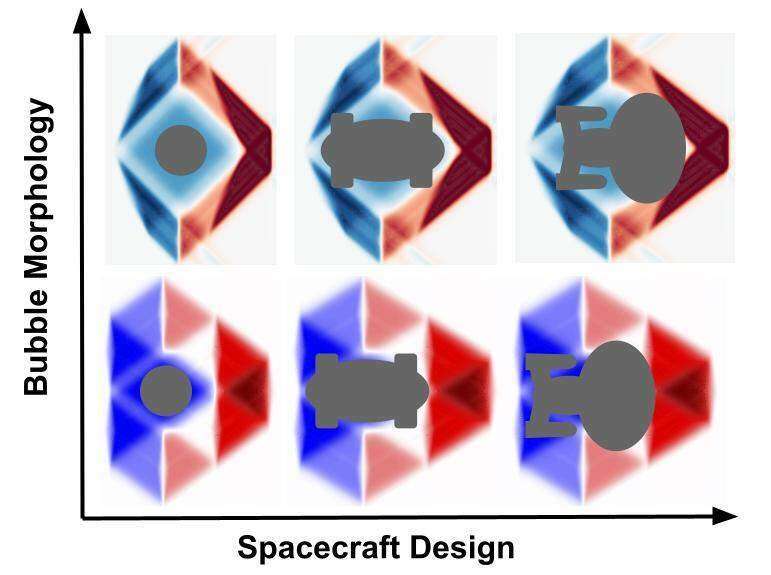
If travel to distant stars within an individual's lifetime is going to be possible, a means of faster-than-light propulsion will have to be found. To date, even recent research about superluminal (faster-than-light) transport based on Einstein's theory of general relativity would require vast amounts of hypothetical particles and states of matter that have 'exotic' physical properties such as negative energy density. This type of matter either cannot currently be found or cannot be manufactured in viable quantities. In contrast, new research carried out at the University of Göttingen gets around this problem by constructing a new class of hyper-fast 'solitons' using sources with only positive energies that can enable travel at any speed. This reignites debate about the possibility of faster-than-light travel based on conventional physics. The research is published in the journal Classical and Quantum Gravity .
The author of the paper, Dr. Erik Lentz, analyzed existing research and discovered gaps in previous 'warp drive' studies. Lentz noticed that there existed yet-to-be explored configurations of space-time curvature organized into 'solitons' that have the potential to solve the puzzle while being physically viable. A soliton—in this context also informally referred to as a 'warp bubble'—is a compact wave that maintains its shape and moves at constant velocity. Lentz derived the Einstein equations for unexplored soliton configurations (where the space-time metric's shift vector components obey a hyperbolic relation), finding that the altered space-time geometries could be formed in a way that worked even with conventional energy sources. In essence, the new method uses the very structure of space and time arranged in a soliton to provide a solution to faster-than-light travel , which—unlike other research—would only need sources with positive energy densities. No exotic negative energy densities needed.
If sufficient energy could be generated, the equations used in this research would allow space travel to Proxima Centauri, our nearest star, and back to Earth in years instead of decades or millennia. That means an individual could travel there and back within their lifetime. In comparison, the current rocket technology would take more than 50,000 years for a one-way journey. In addition, the solitons (warp bubbles) were configured to contain a region with minimal tidal forces such that the passing of time inside the soliton matches the time outside: an ideal environment for a spacecraft. This means there would not be the complications of the so-called 'twin paradox' whereby one twin traveling near the speed of light would age much more slowly than the other twin who stayed on Earth: in fact, according to the recent equations both twins would be the same age when reunited.
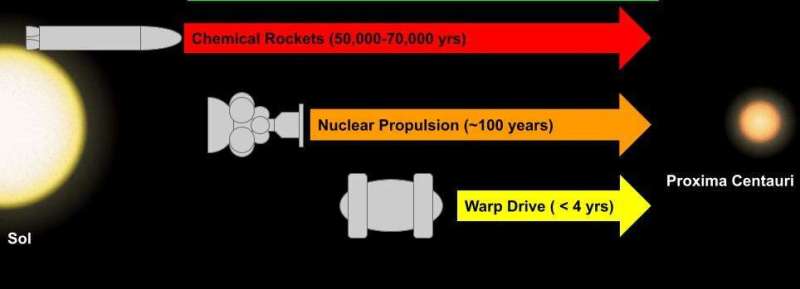
"This work has moved the problem of faster-than-light travel one step away from theoretical research in fundamental physics and closer to engineering. The next step is to figure out how to bring down the astronomical amount of energy needed to within the range of today's technologies, such as a large modern nuclear fission power plant. Then we can talk about building the first prototypes," says Lentz.
Currently, the amount of energy required for this new type of space propulsion drive is still immense. Lentz explains, "The energy required for this drive traveling at light speed encompassing a spacecraft of 100 meters in radius is on the order of hundreds of times of the mass of the planet Jupiter. The energy savings would need to be drastic, of approximately 30 orders of magnitude to be in range of modern nuclear fission reactors." He goes on to say: "Fortunately, several energy-saving mechanisms have been proposed in earlier research that can potentially lower the energy required by nearly 60 orders of magnitude." Lentz is currently in the early-stages of determining if these methods can be modified, or if new mechanisms are needed to bring the energy required down to what is currently possible.
Provided by University of Göttingen
Explore further
Feedback to editors

DNA study of Avar cemetery remains reveals network of large pedigrees and social practices

Global study shows a third more insects come out after dark
23 hours ago


Cicada-palooza! Billions of bugs to blanket America
Apr 27, 2024

Getting dynamic information from static snapshots

Ancient Maya blessed their ballcourts: Researchers find evidence of ceremonial offerings in Mexico

Optical barcodes expand range of high-resolution sensor
Apr 26, 2024

Ridesourcing platforms thrive on socio-economic inequality, say researchers

Did Vesuvius bury the home of the first Roman emperor?

Florida dolphin found with highly pathogenic avian flu: Report

A new way to study and help prevent landslides
Relevant physicsforums posts, conservation of energy and wave function collapse.
8 hours ago
How to "derive" momentum operator in position basis using STE
15 hours ago
Is quantum interference an instantaneous consequence of superposition ?
21 hours ago
Quantum particle's state in momentum eigenfunctions basis
How to know the number of feynman diagrams for a given order, how to enter measurement results into bell inequality.
More from Quantum Physics
Related Stories

A potential model for a real physical warp drive
Mar 4, 2021

Don't stop me now! Superluminal travel in Einstein's universe
Nov 27, 2015

There's no way to measure the speed of light in a single direction
Jan 11, 2021

Colliding solitons in optical microresonators to reveal important fundamental physics
Apr 24, 2020

High Altitude Water Cherenkov observatory tests speed of light
Mar 31, 2020
The trouble with rockets
Jan 5, 2018
Recommended for you

Unveiling a new quantum frontier: Frequency-domain entanglement

Research demonstrates a new mechanism of order formation in quantum systems

Demonstration of heralded three-photon entanglement on a photonic chip
Apr 25, 2024

Light stands still in a deformed crystal
Apr 24, 2024

Scientists at the MAJORANA Collaboration look for rule-violating electrons

Scientists tune the entanglement structure in an array of qubits
Let us know if there is a problem with our content.
Use this form if you have come across a typo, inaccuracy or would like to send an edit request for the content on this page. For general inquiries, please use our contact form . For general feedback, use the public comments section below (please adhere to guidelines ).
Please select the most appropriate category to facilitate processing of your request
Thank you for taking time to provide your feedback to the editors.
Your feedback is important to us. However, we do not guarantee individual replies due to the high volume of messages.
E-mail the story
Your email address is used only to let the recipient know who sent the email. Neither your address nor the recipient's address will be used for any other purpose. The information you enter will appear in your e-mail message and is not retained by Phys.org in any form.
Newsletter sign up
Get weekly and/or daily updates delivered to your inbox. You can unsubscribe at any time and we'll never share your details to third parties.
More information Privacy policy
Donate and enjoy an ad-free experience
We keep our content available to everyone. Consider supporting Science X's mission by getting a premium account.
E-mail newsletter
[Physics FAQ] - [Copyright]
By Philip Gibbs, 1997, 1998.
It might be thought that special relativity provides a short negative answer to this question. In actual fact, there are many trivial ways in which things can be going faster than light (FTL) in a sense, and there may be other more genuine possibilities. On the other hand, there are also good reasons to believe that real FTL travel and communication will always be unachievable. This article is not a full answer to the question (which no doubt will continue to be discussed in the newsgroups for the foreseeable future), but it does cover some of the more common points that are repeatedly made.
It is sometimes objected that "they said no-one would ever go faster than sound and they were wrong. Now they say no-one will ever go faster than light..." Actually it is probably not true that anybody said it was impossible to go faster than sound. It was known that rifle bullets go faster than sound long before an aircraft did. The truth is that some engineers once said that controlled flight faster than sound might be impossible, and they were wrong about that. FTL travel is a very different matter. It was inevitable that someone would one day succeed in flying faster than sound, once technology got around the problems. It is not inevitable that one day technology will enable us to go faster than light. Relativity has a lot to say about this. If FTL travel or FTL communication were possible, then causality would probably be violated and some very strange situations would arise.
First we will cover the trivial ways in which things can go FTL. These points are mentioned not because they are interesting, but because they come up time and time again when FTL is being discussed, and so they are necessary to deal with. Then we will think about what we mean by non-trivial FTL travel/communication and examine some of the arguments against it. Finally, we will look at some of the more serious proposals for real FTL. Many of these things are discussed in more detail elsewhere in the FAQ and hyper-links are provided. The sections are numbered so that they can be referred to individually.
Trivial FTL Travel
1. cherenkov effect.
One way to go faster than light is to make the light slow down! Light in vacuum travels at a speed c which is a universal constant (see the FAQ entry Is the speed of light constant? ), but in a dense medium such as water or glass, light slows down to c/n where n is the refractive index of the medium (1.0003 for air, 1.4 for water). It is certainly possible for particles to travel through air or water faster than light travels in that medium, and Cherenkov radiation is produced as a result. See the FAQ entry Is there an equivalent of the sonic boom for light? .
When we discuss moving faster than light, we are really talking about exceeding the speed of light in vacuum c (299,792,458 m/s). The Cherenkov effect is thus not considered to be a real example of FTL travel.
2. Third-Party Observers
If a rocket A is travelling away from me at 0.6c in a westerly direction, and another B is travelling away from me at 0.6c in an easterly direction, then the total distance between A and B as seen in my frame of reference is increasing at 1.2c . An apparent relative speed greater than c can be observed by a third person in this way.
But this is not what is normally meant by relative speeds. The true speed of rocket A relative to rocket B is the speed at which an observer in rocket B observes his distance from A to be increasing. The two speeds must be added using the relativistic formula for addition of velocities. (See the FAQ entry How do You Add Velocities in Special Relativity? ) In this case the relative speed is actually about 0.88c , so this is not an example of FTL travel.
3. Shadows and Light Spots
Think about how fast a shadow can move. If you project the shadow of your finger using a nearby lamp onto a distant wall and then wag your finger, the shadow will move much faster than your finger. If your finger moves parallel to the wall, the shadow's speed will be multiplied by a factor D/d where d is the distance from the lamp to your finger, and D is the distance from the lamp to the wall. The speed can even be much faster than this if the wall is at an angle to your finger's motion. If the wall is very far away, the movement of the shadow will be delayed because of the time it takes light to get there, but the shadow's speed is still increased by the same ratio. The speed of a shadow is therefore not restricted to be less than the speed of light.
This behaviour of a shadow is all about the arrival of successive "pieces of light" (photons, if you will) at a screen. It is really no different to the faster-than-light speed of a spot on the Moon's surface caused by a laser that has been aimed at that surface and is being waved around on Earth. Given that the distance to the Moon is 385,000 km, try working out the speed of that spot if you wave the laser at a gentle speed. You might also like to think about a water wave arriving obliquely at a long straight beach. How fast can the point at which the wave is breaking travel along the beach?
This sort of thing turns up in Nature; for example, the beam of light from a pulsar can sweep across a dust cloud. A bright explosion emits an expanding spherical shell of light or other radiation. When this shell intersects a surface, it creates a circle of light which expands faster than light. A natural example of this has been observed when an electromagnetic pulse from a lightning flash hits an upper layer of the atmosphere.
These are all examples of "things" that seem to be moving faster than light. In reality, no object or signal is moving faster that light here. For a more prosaic example, imagine squirting water from a garden hose at a fence, and moving your aim from one end of the fence to the other. The intersection point of water stream and fence moves quickly, but of course no thing or signal is really moving along the fence. A succession of water molecules strikes the fence, but their speed of travel has nothing to do with how quickly you move the hose. It is a kind of optical illusion for us to think that the wet spot advancing along the fence is a moving object or signal. The ban in relativity against faster-than-light travel actually concerns the speed of signals (which includes material objects and waves): in a vacuum, no signal is allowed to move faster than light moves in its vicinity. Neither a moving shadow, nor a laser spot, nor a wet spot on a fence, constitute a signal that is being sent from the initial position of those spots to the final position. Since these moving spots don't constitute a signal, they are all allowed to move faster than light. This is not really what we mean by faster-than-light travel, although it shows how difficult it is to define what we really do mean by faster-than-light travel. See also the FAQ The Superluminal Scissors .
4. Rigid Bodies
If you have a long rigid stick and you hit one end, wouldn't the other end have to move immediately? Would this not provide a means of FTL communication?
Well, it would if there were such things as perfectly rigid bodies. In practice the effect of hitting one end of the stick propagates along it at the speed of sound in the material; this speed depends on the stick's elasticity and density. Relativity places an absolute limit on material rigidity in such a way that the speed of sound in the material will not be greater than c .
The same principle applies if you hold a long string or rod vertically in a gravitational field and let go of the top end. The point at which you let go will start to move immediately, but the lower end cannot move until the effect has propagated down the length. That speed of propagation depends on the nature of the material and the strength of the gravitational field.
It is difficult to formulate a general theory of elastic materials in relativity, but the general principle can be illustrated with newtonian mechanics. The equation for longitudinal motion in an ideal elastic body can be derived from Hooke's law. In terms of the mass per unit length p and Young's modulus of elasticity Y , the longitudinal displacement X satisfies a wave equation (see for example Goldstein's "Classical Mechanics"):
Plane wave solutions travel at the speed of sound s where s 2 = Y/p . This wave equation does not allow any causal effect to propagate faster than s . Relativity therefore imposes a limit on elasticity: Y < pc 2 . In practice, no known material comes anywhere near this limit. Note that even if the speed of sound is near c , the matter does not necessarily move at relativistic speeds. But how can we know that no material can possibly exceed this limit? The answer is that all materials are made of particles whose interaction are governed by the standard model of particle physics, and no influence faster than light can propagate in that model (see the section on Quantum Field Theory below).
So although there is no such thing as a rigid body, there is such a thing as rigid body motion; but this is another example in the same category as the shadows and light spots described above which do not give FTL communication. (See also the FAQ articles The Superluminal Scissors and The Rigid Rotating Disk in Relativity ).
5. Phase, Group, and Signal Velocities
Look at this wave equation:
This has solutions of the form:
These solutions are sine waves propagating with a speed
But this is faster than light, so is this the equation for a tachyon field? (See the paragraph on tachyons below ). No, it is the usual relativistic equation for an ordinary particle with mass!
Superluminal speeds such as this present no problem once we recognise three types of speed associated with wave motion: phase velocity , group velocity , and signal velocity . Phase velocity is the velocity of waves that have well-defined wavelengths, and it often varies as a function of this wavelength. We can combine ("superpose") waves of different wavelengths to build a wave packet , a blob of some specified extent over which the wave disturbance is not small. This packet does not have a well-defined wavelength, and because it usually spreads out as it travels, it doesn't have a well-defined velocity either; but it does have representative velocity, and this is called its group velocity, which will usually be less than c . Each of the packet's constituent wave trains travels with its own individual phase velocity, which in some instances will be greater than c . But it is only possible to send information with such a wave packet at the group velocity (the velocity of the blob), so the phase velocity is yet another example of a speed faster than light that cannot carry a message.
In some situations, we can build a fairly exotic wave packet whose group velocity is greater than c . Does this then constitute an example of information being sent at a speed faster than light? It turns out that for these packets, information does not travel at the group velocity; instead, it travels at the signal velocity , which has to do with the time of arrival of the initial rise of the wave front as it reaches its destination. You might not now be surprised to learn that the signal velocity turns out always to be less than c .
6. Superluminal Galaxies
If something is coming towards you at nearly the speed of light and you measure its apparent speed without taking into account the diminishing time it takes light to reach you from the object, you can get an answer that is faster than light. This is an optical illusion, and is not due to the object's moving at FTL. See the FAQ Apparent Superluminal Velocity of Galaxies .
7. Relativistic Rocket
A controller based on Earth is monitoring a space ship moving away at a speed 0.8c . According to the theory of relativity, he will observe a time dilation that slows the ship's clocks by a factor of 5/3, even after he has taken into account the Doppler shift of signals coming from the space ship. If he works out the distance moved by the ship divided by the time elapsed as measured by the onboard clocks, he will get an answer of 4/3 c . He infers from this that the ship's occupants determine themselves to be traversing the distances between stars at speeds greater than the speed of light when measured with their clocks. From the point of view of the occupants their clocks undergo no slowing; rather, they maintain that it is the distance between the stars which has contracted by a factor of 5/3. So they also agree that they are covering the known distances between stars at 4/3 c .
This is a real effect which in principle could be used by space travellers to cover very large distances in their lifetimes. If they accelerate at a constant acceleration equal to the acceleration due to gravity on Earth, they would not only have a perfect artificial gravity on their ship, but would also be able to cross the galaxy in only about 12 years of their own "proper time": that is, they would age 12 years during the journey. See the FAQ What are the Equations for the Relativistic Rocket?
Nevertheless, this is not true FTL travel. The effective speed calculated used the distance in one reference frame and the time in another. This is no way to calculate a speed. Only the occupants of the ship benefit from this effective speed. The controller will not measure them to be travelling large distances in his own lifetime.
8. Speed of Gravity
Some people have argued that the speed of gravity in a gravitationally bound system is much greater than c or even infinite. In fact, gravitational effects and gravitational waves travel at the speed of light c . See the articles Does Gravity Travel at the Speed of Light? and What is Gravitational Radiation? for the explanation.
9. EPR Paradox
In 1935 Einstein, Podolsky, and Rosen published a thought experiment that seemed to produce a paradox in quantum mechanics, as well as demonstrating that it was incomplete. Their argument used the fact that there can be an apparent instantaneous interaction in the measurement of two separated particles that have been prepared in a certain "entangled" manner. Einstein called it "spooky action at a distance". It has been shown by Eberhard that no information can be passed using this effect; so there is no FTL communication, but the paradox is still very controversial. See the FAQ article The EPR Paradox and Bell's Inequality for more details.
10. Virtual Photons
In quantum field theory forces are mediated by "virtual particles". The Heisenberg Uncertainty Principle allows these virtual particles to move faster than light. But virtual particles are not called "virtual" for nothing. They are only part of a convenient mathematical notation, and once again, no real FTL travel or communication is possible. See the FAQ Virtual Particles .
11. Quantum Tunnelling
Quantum Tunnelling is the quantum mechanical effect that permits a particle to pass through a barrier when it does not have enough energy to do so classically. You can do a calculation of the time it takes a particle to tunnel through such a barrier. The answer you get can come out less than the time it takes light to cover the distance at speed c . Does this provide a means of FTL communication? Ref: T. E. Hartman, J. Appl. Phys. 33 , 3427 (1962).
The answer must surely be "No!"—otherwise our understanding of QED is very suspect. Yet a group of physicists have performed experiments that seem to suggest that FTL communication by quantum tunneling is possible. They claim to have transmitted Mozart's 40th Symphony through a barrier 11.4cm wide at a speed of 4.7 c . Their interpretation is, of course, very controversial. Most physicists say this is a quantum effect where no information can actually be passed at FTL speeds. If the effect is real it is difficult to see why it should not be possible to transmit signals into the past by placing the apparatus in a fast-moving frame of reference. Refs: W. Heitmann and G. Nimtz, Phys. Lett. A196 , 154 (1994); A. Enders and G. Nimtz, Phys. Rev. E48 , 632 (1993).
Terence Tao has pointed out that apparent FTL transmission of an audio signal over such a short distance is not very impressive. The signal takes less than 0.4 ns to travel the 11.4 cm at light speed, but it is quite easy to anticipate an audio signal ahead of time by up to 1000 ns simply by extrapolating the signal waveform. Although this is not what is being done in the above experiments, it does illustrate that the experimenters will need to use a much higher frequency random signal, or transmit over much larger distances, if they are to demonstrate FTL information transfer convincingly.
The likely conclusion is that there is no real FTL communication taking place, and that the effect is another manifestation of the Heisenberg Uncertainty Principle.
12. Casimir Effect
The Casimir Effect describes the fact that a very small but measurable force exists between two uncharged conducting plates when they are very close together. It is due to the existence of vacuum energy (see the FAQ article on the Casimir Effect ). A surprising calculation by Scharnhorst suggests that photons travelling across the gap between the plates in the Casimir Effect must go faster than c by a very very small amount (at best 1 part in 10 24 for a 1 nanometre gap.) It has been suggested that in certain cosmological situations, such as in the vicinity of cosmic strings if they exist, the effect could be much more pronounced. Even so, further theoretical investigations have shown that, once again, there is no possibility of FTL communication using this effect. Refs: K. Scharnhorst, Physics Letters B236 , 354 (1990) S. Ben-Menahem, Physics Letters B250 , 133 (1990) Andrew Gould (Princeton, Inst. Advanced Study). IASSNS-AST-90-25 Barton & Scharnhorst, J. Phys. A26 , 2037 (1993).
13. Expansion of the Universe
According to Hubble's Law, two galaxies that are a distance D apart are moving away from each other at a speed HD , where H is Hubble's constant. So this interpretation of Hubble's Law implies that two galaxies separated by a distance greater than c/H must be moving away from each other faster than light. Actually, the modern viewpoint describes this situation differently: general relativity takes the galaxies as being at rest relative to one another, while the space between them is expanding. In that sense, the galaxies are not moving away from each other faster than light; they are not moving away from each other at all! This change of viewpoint is not arbitrary; rather, it's in accord with the different but very fruitful view of the universe that general relativity provides. So the distance between two objects can be increasing faster than light because of the expansion of the universe, but this does not mean, in fact, that their relative speed is faster than light.
As was mentioned above, in special relativity it is possible for two objects to be moving apart by speeds up to twice the speed of light as measured by an observer in a third frame of reference. In general relativity even this limit can be surpassed, but it will not then be possible to observe both objects at the same time. Again, this is not real faster-than-light travel; it will not help anyone to travel across the galaxy faster than light. All that is happening is that the distance between two objects is increasing faster when taken in some cosmological reference frame.
14. The Moon revolves round my head faster than light!
Stand up in a clear space and spin round. It is not too difficult to turn at one revolution each two seconds. Suppose the Moon is on the horizon. How fast is it spinning round your head? It is about 385,000 km away, so the answer is 1.21 million km/s, which is more than four times the speed of light! It might sound ridiculous to say that the Moon is going round your head when really it is you who is turning, but according to general relativity all co-ordinate systems are equally valid, including rotating ones. So isn't the Moon going faster than light?
What it comes down to is the fact that velocities in different places cannot be compared directly in general relativity. Notice that the Moon is not overtaking any light in its own locality. The speed of the Moon can only be compared to the speeds of other objects in its own locality. Indeed, the concept of speed is not a very useful one in general relativity, and this makes it difficult to define what "faster than light" means. Even the statement that "the speed of light is constant" is open to interpretation in general relativity. Einstein himself, on page 76 of his book "Relativity: the Special and the General Theory", wrote that the statement cannot claim unlimited validity. When there is no absolute definition of time and distance it is not so clear how speeds should be determined.
Nevertheless, the modern interpretation is that the speed of light is constant in general relativity and this statement is a tautology given that standard units of distance and time are tied together using the speed of light. The Moon is given to be moving slower than light because it remains within the "future light cone" propagating from its position at any instant.
Relativity Arguments Against FTL Travel
15. what does "faster than light" mean.
The cases given so far only demonstrate how difficult it is to pin down exactly what we mean by FTL travel or communication. If we do not include things such as moving shadows, then what exactly do we mean by FTL?
In relativity there is no such thing as absolute velocity, only relative velocity; but there is a clear distinction between "world lines" that are "timelike", "lightlike", and "spacelike". By "world line" we mean a curve traced out in the four dimensions of space-time. Such a curve is the set of all events that make up the history of a particle. If a world line is spacelike then it describes something moving faster than light. So there is a clear meaning of what is meant by a "faster-than-light" speed which does not depend on the existence of third-party observers.
But what do we mean by an "object" if we don't want to include shadows? We could define an object to be anything that carries energy, charge, spin, or information; or perhaps just that it must be made of atoms, but there are technical problems in each case. In general relativity energy cannot be localised, so we had better avoid using energy in our definition. Charge and spin can be localised, but not every object need have charge or spin. Using the concept of information is better but tricky to define, and sending information faster than light is really just FTL communication—not FTL travel. Another difficulty is knowing whether an object seen at A is the same as the one that was earlier seen at B when we claim that it has travelled across the gap faster than light. Could it not be a duplicate? It could even be argued that FTL communication makes FTL travel possible, because you can send the blueprint for an object FTL as advance information, and then reconstruct the object—although not everyone would accept such teleportation as FTL travel.
The problems of specifying just what we mean by FTL are more difficult in general relativity. A valid form of FTL travel may mean distorting space-time (e.g. making a worm hole) to get from A to B without going on a spacelike curve locally. There is a distinction between going faster than light locally and getting from A to B faster than light globally . When a gravitational lens bends the light coming from a distant galaxy asymmetrically, the light coming round the galaxy on one side reaches us later than light that left at the same time and went round the other side. We must avoid a definition of FTL travel that says a particle going from A to B gets there before light that has made the same journey along a lightlike geodesic. This makes it very difficult, perhaps impossible, to define global FTL travel unambiguously.
If you were expecting me to finish this section with a precise definition of what is meant by FTL travel and FTL communication, I am afraid I must disappoint you! The above difficulties are insurmountable. Nonetheless, you will probably recognise the real thing when confronted with it now that I have given some examples of what would not be FTL travel.
16. The Infinite-Energy Argument
When Einstein wrote down his postulates for special relativity, he did not include the statement that you cannot travel faster than light. There is a misconception that it is possible to derive it as a consequence of the postulates he did give. Incidentally, it was Henri Poincare who said "Perhaps we must construct a new mechanics [...] in which the speed of light would become an impassable limit." That was in an address to the International Congress of Arts and Science in 1904—before Einstein announced special relativity in 1905.
It is a consequence of relativity that the energy of a particle of rest mass m moving with speed v is given by
As the speed approaches the speed of light, the particle's energy approaches infinity. Hence it should be impossible to accelerate an object with rest mass to the speed of light; also, particles with zero rest mass must always move at exactly the speed of light, since otherwise they would have no energy. This is sometimes called the "light speed barrier", but it is very different from the "sound speed barrier". As an aircraft approaches the speed of sound it starts to feel pressure waves which indicate that it is moving close to the speed of sound, and before the existence and effects of these waves were well understood, they destroyed several aircraft in the mid 20th century; hence the old name of sound "barrier". In fact, with more thrust and the right aerodynamics, an aircraft can certainly pass through the sound barrier.
The situation is different for light. As the light speed barrier is approached (in a perfect vacuum) there are no such waves according to relativity (destructive or otherwise). Moving at 0.999 c is just like standing still with everything rushing past you at −0.999 c . Particles are routinely pushed to these speeds and beyond in accelerators, so the theory is well established. Trying to attain the speed of light in this way is a matter of chasing something that is forever just out of your reach.
This explains why it is not possible to exceed the speed of light by ordinary mechanical means. But it does not in itself rule out FTL travel. It is really just one way in which things cannot be made to go faster than light, rather than a proof that there is no way to do so. Particles are known to decay instantly into other particles which fly off at high speed. It is not necessary to think in terms of the particles' having been accelerated, so how could we say that they could not go faster than light? What about the possibility of particles that might always have been moving faster than light, and which might be used to send information if they can be detected without ever slowing down to less than the speed of light? Even if such "tachyons" don't exist (and we don't believe that they do exist), there may be ways of moving matter from A to B faster than light is able to travel from A to B by the usual route, but without anything having to go at a FTL speed locally. See the paragraph on tachyons below .
17. Quantum Field Theory
Except for gravity, all physical phenomena are observed to comply with the "Standard Model" of particle physics. The Standard Model is a relativistic quantum field theory which incorporates the nuclear and electromagnetic forces as well as all the observed particles. In this theory, any pair of operators corresponding to physical observables at space-time events separated by a spacelike interval "commute" (i.e. their order can be reversed). In principle, this implies that effects cannot propagate faster than light in the standard model, and it can be regarded as the quantum field theory equivalent of the infinite energy argument.
But no completely rigorous proofs of anything exist in the quantum field theory of the Standard Model, since no one has yet succeeded in showing that the theory is completely self consistent; and in fact, most likely it is not! In any case, there is no guarantee that there are not other undiscovered particles and forces that disobey the no-FTL rule. Nor is there any generalisation that takes gravity and general relativity into account. Many physicists working on quantum gravity doubt that such simplistic expressions of causality and locality will be generalised. All told, there is no guarantee that light speed will be meaningful as a speed limit in a more complete theory that might arise in the future.
18. Grandfather Paradox
A better argument against FTL travel is the Grandfather Paradox. In special relativity, a particle moving FTL in one frame of reference will be travelling back in time in another. FTL travel or communication should therefore also give the possibility of travelling back in time or sending messages into the past. If such time travel is possible, you would be able to go back in time and change the course of history by killing your own grandfather. This is a very strong argument against FTL travel, but it leaves open the perhaps-unlikely possibility that we may be able to make limited journeys at FTL speed that did not allow us to come back. Or it may be that time travel is possible and causality breaks down in some consistent fashion when FTL travel is achieved. That is not very likely either, but if we are discussing FTL then we had better keep an open mind.
Conversely, if we could travel back in time we might also claim the ability to travel FTL, because we can go back in time and then travel at a slow speed to arrive somewhere before light got there by the usual route. See the FAQ article on Time Travel for more on this subject.
Open Possibilities for FTL Travel
In this last section I give a few of the speculative but serious suggestions for possible faster-than-light travel. These are not the kinds of thing usually included in the FAQ because they raise more questions than answers. They are included merely to make the point that serious research is being done in this direction. Only a brief introduction to each topic is given; more information can be found all over the Internet (and should, like almost everything on the Internet, be taken with a huge grain of salt!).
19. Tachyons
Tachyons are hypothetical particles that travel faster than light locally. Their mass must take on imaginary values (i.e. to do with the square root of −1) to be able to do so, but they have real-valued energy and momentum. Sometimes people imagine that such FTL particles would be impossible to detect, but there is no reason to think so. Shadows and spotlights suffice to show that there is no logic in this suggestion, because they can certainly go FTL and still be seen.
No tachyons have definitely been found and most physicists doubt their existence. There has been a claim that experiments to measure neutrino mass in tritium beta decay indicated that the neutrinos were tachyonic. ; while this is very doubtful, it is not entirely ruled out. Tachyon theories have problems because, apart from the possibility of causality violations, they destabilise the vacuum. It may be possible to get around such difficulties—but then we would not be able to use tachyons for the kind of FTL communication that we would like.
The truth is that most physicists consider tachyons to be a sign of pathological behaviour in field theories, and the interest in them among the wider public stems mostly from the fact that they are used so often in science fiction. See the FAQ article on Tachyons .
20. Worm Holes
A famous proposition for global FTL travel is to use "worm holes". Worm holes are shortcuts through space-time from one place in the universe to another which would permit you to go from one end to the other in a shorter time than it would take light passing by the usual route. Worm holes are a feature of classical general relativity, but to create them you have to change the topology of space-time. That might be possible within a theory of quantum gravity.
To keep a worm hole open, regions of negative energy would be needed. Misner and Thorne have suggested using the Casimir Effect on a grand scale to generate the negative energy, while Visser has proposed a solution involving cosmic strings. These are very speculative ideas which may simply not be possible. Exotic matter with negative energy may not exist in the form required.
Thorne has found that if worm holes can be created, then they can be used to construct closed timelike loops in space-time which would imply the possibility of time travel. It has been suggested that the "multiverse" interpretation of quantum mechanics (many universes co-existing) gets you out of trouble by allowing time to evolve differently if you succeed in going back to a previous time. But multiverses are entirely out of keeping with the Ockham's Razor approach to doing science, and constitute more of a popular interpretation of quantum mechanics than a serious physical theory. Hawking says that worm holes would simply be unstable and therefore unusable. The subject remains a fertile area for thought experiments that help clarify what is and what is not possible according to known and suggested laws of physics. Refs: W. G. Morris and K. S. Thorne, American Journal of Physics 56 , 395–412 (1988) W. G. Morris, K. S. Thorne, and U. Yurtsever, Phys. Rev. Letters 61 , 1446–9 (1988) Matt Visser, Physical Review D39 , 3182–4 (1989) See also "Black Holes and Time Warps", Kip Thorne, Norton & co. (1994) For an explanation of the multiverse see "The Fabric of Reality" David Deutsch, Penguin Press.
21. Warp Drives
A "warp drive" such as used in the Star Trek science fiction series would be a mechanism for warping space-time in such a way that an object could move faster than light. Miguel Alcubierre made himself famous by working out a space-time geometry which describes such a warp drive. The warp in space-time makes it possible for an object to go FTL while remaining on a timelike curve. The main catch is the same one that may stop us making large worm holes. To make such a warp, you would need exotic matter with negative energy density. Even if such exotic matter can exist, it is not clear how it could be deployed to make the warp drive work. Ref. M. Alcubierre, Classical and Quantum Gravity, 11 , L73–L77, (1994). Ref. S. Finazzi, S. Liberati, C. Barcel�, Semiclassical instability of dynamical warp drives at arxiv.org.
- To begin with, it is rather difficult to define exactly what is really meant by FTL travel and FTL communication. Many things such as shadows can go FTL, but not in a useful way that can carry information.
- There are several serious possibilities for real FTL which have been proposed in the scientific literature, but these always come with technical difficulties.
- The Heisenberg Uncertainty Principle tends to stop the use of apparent FTL quantum effects for sending information or matter.
- In general relativity there are potential means of FTL travel, but they may be impossible to make work. It is thought highly unlikely that engineers will be building space ships with FTL drives in the foreseeable future, if ever, but it is curious that theoretical physics as we presently understand it seems to leave the door open to the possibility.
- FTL travel of the sort science fiction writers would like is almost certainly impossible. For physicists the interesting question is "why is it impossible and what can we learn from that?"
Breaking the warp barrier for faster-than-light travel
New theoretical hyper-fast soliton solutions.
If travel to distant stars within an individual's lifetime is going to be possible, a means of faster-than-light propulsion will have to be found. To date, even recent research about superluminal (faster-than-light) transport based on Einstein's theory of general relativity would require vast amounts of hypothetical particles and states of matter that have "exotic" physical properties such as negative energy density. This type of matter either cannot currently be found or cannot be manufactured in viable quantities. In contrast, new research carried out at the University of Göttingen gets around this problem by constructing a new class of hyper-fast 'solitons' using sources with only positive energies that can enable travel at any speed. This reignites debate about the possibility of faster-than-light travel based on conventional physics. The research is published in the journal Classical and Quantum Gravity .
The author of the paper, Dr Erik Lentz, analysed existing research and discovered gaps in previous 'warp drive' studies. Lentz noticed that there existed yet-to-be explored configurations of space-time curvature organized into 'solitons' that have the potential to solve the puzzle while being physically viable. A soliton -- in this context also informally referred to as a 'warp bubble' -- is a compact wave that maintains its shape and moves at constant velocity. Lentz derived the Einstein equations for unexplored soliton configurations (where the space-time metric's shift vector components obey a hyperbolic relation), finding that the altered space-time geometries could be formed in a way that worked even with conventional energy sources. In essence, the new method uses the very structure of space and time arranged in a soliton to provide a solution to faster-than-light travel, which -- unlike other research -- would only need sources with positive energy densities. No "exotic" negative energy densities needed.
If sufficient energy could be generated, the equations used in this research would allow space travel to Proxima Centauri, our nearest star, and back to Earth in years instead of decades or millennia. That means an individual could travel there and back within their lifetime. In comparison, the current rocket technology would take more than 50,000 years for a one-way journey. In addition, the solitons (warp bubbles) were configured to contain a region with minimal tidal forces such that the passing of time inside the soliton matches the time outside: an ideal environment for a spacecraft. This means there would not be the complications of the so-called "twin paradox" whereby one twin travelling near the speed of light would age much more slowly than the other twin who stayed on Earth: in fact, according to the recent equations both twins would be the same age when reunited.
"This work has moved the problem of faster-than-light travel one step away from theoretical research in fundamental physics and closer to engineering. The next step is to figure out how to bring down the astronomical amount of energy needed to within the range of today's technologies, such as a large modern nuclear fission power plant. Then we can talk about building the first prototypes," says Lentz.
Currently, the amount of energy required for this new type of space propulsion drive is still immense. Lentz explains, "The energy required for this drive travelling at light speed encompassing a spacecraft of 100 meters in radius is on the order of hundreds of times of the mass of the planet Jupiter. The energy savings would need to be drastic, of approximately 30 orders of magnitude to be in range of modern nuclear fission reactors." He goes on to say: "Fortunately, several energy-saving mechanisms have been proposed in earlier research that can potentially lower the energy required by nearly 60 orders of magnitude." Lentz is currently in the early-stages of determining if these methods can be modified, or if new mechanisms are needed to bring the energy required down to what is currently possible.
- Astrophysics
- Dark Matter
- Black Holes
- Nuclear Energy
- Quantum Physics
- Electromagnetic spectrum
- Quantum entanglement
- Particle physics
- Wave-particle duality
Story Source:
Materials provided by University of Göttingen . Note: Content may be edited for style and length.
Journal Reference :
- Erik W Lentz. Breaking the warp barrier: hyper-fast solitons in Einstein–Maxwell-plasma theory . Classical and Quantum Gravity , 2021; 38 (7): 075015 DOI: 10.1088/1361-6382/abe692
Cite This Page :
Explore More
- Advance in Heart Regenerative Therapy
- Bioluminescence in Animals 540 Million Years Ago
- Profound Link Between Diet and Brain Health
- Loneliness Runs Deep Among Parents
- Food in Sight? The Liver Is Ready!
- Acid Reflux Drugs and Risk of Migraine
- Do Cells Have a Hidden Communication System?
- Mice Given Mouse-Rat Brains Can Smell Again
- How Do Birds Flock? New Aerodynamics
- Cancer: Epigenetic Origin Without DNA Mutation
Trending Topics
Strange & offbeat.
Which Science Fiction has the Best Faster Than Light Travel?
Introduction.
In science fiction one of the biggest challenges is traveling the extremely large distances in space. This is usually accomplished in three different ways throughout multiple works of science fiction. The first mode is to have engines aboard a starship capable of propelling the vehicle at faster than light travel. The second mode is having a method of opening a wormhole in space and travelling large distances through it almost instantaneously. The final type is bending space around the ship in order to be able to achieve the speed required. These types of travel will be compared to the current abilities to travel space, how Mazer traveled in Ender's Game ,travel in Star Trek, and the jumping capabilities of the Battlestar Galactica. By comparing these different modes of transportation throughout various different example of sci-fi it will be shown which type of faster than light travel is the most probable.
Space Program Background
The ability to travel to space is a very new frontier that has only been around for a short while. It all started when the U.S.S.R launched the satellite Sputnik into space and triggered the space race between the U.S.A and the Russians. It took a large amount of time for manned missions to become a realization and many robots and animals were used as the test subjects for the earliest flights. An article in National Geographic it states " Project Mercury was the first attempt by the United States to send men into space. It brought the country together and an estimated two million Americans contributed" [1] . The first flight was only a very short venture into space and lasted 15 minutes and was the second manned flight into space. The next major accomplishment was the moon landing by the astronauts Neil Armstrong and Edwin "Buzz" Aldrin. Even though humans are now able to reach the heavens and explore the vastness of space only a small fraction of the galaxy has been explored by man. The space program has been sending men and women into space since 1961 with Yuri Gagarin, but in the last five decades only one record for distance has been set. The distance record was set by the crew of the Apollo 13 " in April 1970 they passed the far side of the moon at an altitude of 158 miles (254 km), putting them 248,655 miles (400,171 km) away from Earth" [2] . This is a far cry from the ships in Ender's Game travelling to the buggers home planet, the Star Trek ships flying all over the galaxy, or Battlestar Galactica jumping across space.
Faster Than Light Travel
The ability to travel faster than the speed of light would greatly increase the ability to explore space. The accepted speed of light is 2.998x10 8 m/s which converts to 6.706x10 8 miles/hour. On it's closest approach to Earth the minimum distance to Mars is still 54.6x10 9 m in a straight line. The fastest current spacecraft which was a probe that "left Earth at 16111.11 m/s [SIC] and took 39 days to reach Mars on the closest approach" [3] . However with the invention of an engine capable of achieving faster than light speeds this trip would be cut down to 00:03.212 minutes. While this is still not moving between different galaxies or quadrants in space it would greatly increase the range of people like in Ender's Game . However there has been a very vehement debate about the possibilities of traveling faster than the speed of light. In an article about faster than light travel published in The Press Trust of India "Einstein claimed that the speed of light was the traffic law of the universe " [4] . This means that nothing can exceed the speed of light which would make the possibility of ftl travel impossible. Many thought that this would close the debate on the possibility of travelling faster than light and with Einstein's backing many thought it would. However some people weren't on board with the idea that faster than light travel as an impossibility. Further research has proven fruitful and some alternative ideas have been provided. Recently scientists at CERN may be on the track to prove that Einstein was incorrect and that some particles move faster than the speed of light and that a major shift in science is a possibility. After conducting some experiments in the collider they found "invisible neutrino particles moving at six nanoseconds quicker than light" [5] . Even though this is a small amount of time it still is on the way to proving that the speed of light is not a universal constant and can be violated. The possibility of actually traveling faster than the speed of light is far from the realms of Star Trek or Battlestar Galactica but as the methods are explained it will be shown that this is not the most probable method.
Engine Method
Wormhole method.
The second major form of space travel depicted in science fiction is the method of using stabilized wormhole to travel great distances in a very short amount of time. This method is heavily portrayed in the TV show Battlestar Galactica. When they need to travel a large distance they use the FTL drives aboard the ships to generate a stable wormhole and then pilot the ships through it. This type of travel has the added benefit of not requiring the breach of the speed of light speed limit. A wormhole is an extremely dense gravity field that is created naturally when a star supernovas and implodes on itself. These wormholes would connect two different areas of space that could possibly be extreme distances apart making a shortcut through space itself. This theory has had some criticism, which was voiced in an article published in The Sunday Times where "scientists have assumed that any astronaut who was caught in such a powerful gravitational field would be pulled into something resembling a piece of spaghetti" [6] . The article then continues to say that it may be possible to stabilize a wormhole to avoid the astronaut from becoming a piece of spaghetti. This type of space travel would also be highly unpredictable due to the fact that any one wormhole could lead anywhere and that determining the egress point would be extremely difficult. There has been dissent to this view point which was also published in The Sunday Times stating "There are some theories that speculate using 'negative mass' could expand and stabilize the worm hole and make it safer to travel through" [7] . While this method may be able to stabilize a wormhole and make it safe for travel it does not address the unpredictable way in which the wormholes act. This type of space travel would not be the most probable type due to that fact. Also the ability to generate 'negative mass' is still in it's infancy. In a lecture held by Dr. Vuille, a professor at Embry-Riddle Aeronautical University, he calculated the amount of energy this would require. Dr. Vuille proved it was and extremely large amount, much more than the current capabilities would allow.
Bending Space Method
The ships of Star Trek currently employ this type of faster than light travel. On board all of the ships they have a warp field generator. By generating this field around the ship it distorts space in order for it to allow the ability to travel faster than the speed of light without damaging the ship. This mode of space travel was also discussed in The Sunday Times article and states "propulsion systems would distort space by compressing it in front of the spaceship while expanding it behind" [6] . This topic is addressed in the show when a problem with the warp field generator occurs. The crew of the ship, be it Enterprise or Voyager, talk about how the field is expanding or contracting and threatening their ability to maintain or enter into warp speed. Currently NASA is working on a theory that follows this method of space travel. NASA is currently considering using the theories that Miguel Alcubierre wrote titled, "The Warp Drive: Hyper-fast travel within general relativity" [8] . In a TIME Magazine article that summarized what Alcubierre theorized, which is basically that this method would bend space itself which would allow a ship to travel at faster than light speeds without having to make the ship itself break the speed limit. One huge problem with this type of travel, though, would be the power required to begin bending the fabric of the universe. Richard White, a physicist at NASA commented in the TIME article about this problem, which currently has "energy requirements from a planet with the mass equivalent of 300 Earths " [9] . Building a ship with this energy requirement would require a solar system of its own and would dwarf any of the ships in Star Trek. Therefore it would be extremely important to find a smaller power source or a way to make Alcubierre's method more efficient. White has also been looking at lowering this power requirement and that if possible the energy requirement would be reduced down to a source that weighs about 1600 pounds. Being able to reduce the size and weight of the power source could provide a way to build a ship that looks like many of the other ships in other works of science fiction. This mode of space travel would be the most probable with current day technology. In Dr. Vuille's lecture he brought up a possible problem to this method. He stated that all throughout space there are small particles called protons. While traveling at these speed these particles would cause damage to the ship. Therefore for this method to ever truly be viable some sort of shielding device would need to be employed. While there are still many problems that need to be addressed as of now this type of travel doesn't violate any of Newton's laws and can also be supported by current day technology.
Human space travel is a new area that humans have only begun to work in, seeing as space travel has only been made possible in the past 50 years. However, there is a lot of research going on in the field of improving space travel. Out of the three methods of faster than light travel discussed, two of them seem very viable. By using wormholes or bending space the ability to reach far ends of the universe in relatively short amounts of time may yet become a reality. The ability to bend space seems to be the most accurate portrayal of how humans will travel in the future. This is due to the fact that it won't require negative matter or another exotic type of material to create the means of transportation. It also wouldn't require the breaking of current fundamental laws of physics in order to do so. It seems that the writers of Star Trek were on the right track when they employed the use of a warp field generator.

IMAGES
VIDEO
COMMENTS
1. Hyperdrive. Popularized by Star Wars and used extensively in fiction, a hyperdrive enables a spaceship to travel at FTL speeds by entering another dimension known as "hyperspace.". The ...
Interstellar, in one of its most intense scenes, got it right. From our perspective in 3-D space, a wormhole should look like a sphere. Wormholes are an attractive approach to FTL technology ...
Faster-than-light ( superluminal or supercausal) travel and communication are the conjectural propagation of matter or information faster than the speed of light ( c ). The special theory of relativity implies that only particles with zero rest mass (i.e., photons) may travel at the speed of light, and that nothing may travel faster.
Faster than light travel is the only way humans could ever get to other stars in a reasonable amount of time. ... Alcubierre's method of compressing spacetime had one problem: it requires ...
The Honorverse includes several different forms of FTL travel, and I must admit I'm confused about the differences. There's 'hyper', which has different 'bands', each with a different relative speed compared to n-space. This is the most common form of travel I've seen referenced.
Within a couple of decades, the fictional idea of faster-than-light travel made intuitive sense to a public familiar with recent supersonic flights. In 1947, Chuck Yeager broke the speed of sound aboard the Bell X-1 Glamorous Glennis. Writers extrapolated supersonic speeds into the idea of spacecraft traveling at multiples of the speed of light.
New research suggests that it might be possible to build warp drives and beat the galactic speed limit. Faster than light travel is the only way humans could ever get to other stars in a ...
In essence, the new method uses the very structure of space and time arranged in a soliton to provide a solution to faster-than-light travel, which - unlike other research - would only need sources with positive energy densities. ... "This work has moved the problem of faster-than-light travel one step away from theoretical research in ...
Albert Einstein may have proven faster-than-light travel to be impossible, but the rules of physics certainly haven't stopped sci-fi creators from inventing plausible-sounding ways to travel to ...
This is an area that attracts plenty of bright ideas, each offering a different approach to solving the puzzle of faster-than-light travel: achieving a means of sending something across space at superluminal speeds.. Hypothetical travel times to Proxima Centauri, the nearest-known star to the Sun. (E. Lentz) There are some problems with this notion, however.
The field equations of Einstein's General Relativity theory say that faster-than-light (FTL) travel is possible, so a handful of researchers are working to see whether a Star Trek-style warp drive, or perhaps a kind of artificial wormhole, could be created through our technology. But even if shown feasible tomorrow, it's possible that designs for an FTL system could be as far ahead of a ...
Jumps - Guardians Of The Galaxy. The Marvel Cinematic Universe has its own method of FTL travel, but we wouldn't have included it if it hadn't been for the insane scene in Guardians of the Galaxy Vol. 2. Yondu, Rocket, Kraglin, and Groot make 700 "jumps" through space-time in order to reach the rest of the team on Ego's planet in time.
Fictional representations of faster-than-light (FTL) travel have been a mainstay in science fiction literature and media. In order to be considered credible by audiences, these representations are ...
But so far, faster-than-light travel is possible only in science fiction. ... Unfortunately, Alcubierre's method of compressing spacetime had one problem: it requires negative energy or negative ...
Other than it being a common trope there is little reason for most science fiction to actually have faster than light travel. There is plenty of room in the solar system for huge empires, deviant human strains (which eliminates the need for horribly unrealistic human-like aliens, since they can just be humans!), massive objects and huge spaceships. 99% of all science fiction, including space ...
Faster-than-light (FTL) travel is a staple of sci-fi, hand-waving away multi-millennia journeys between stars. ... While a warp drive that uses conventional energy sources could be a major ...
In essence, the new method uses the very structure of space and time arranged in a soliton to provide a solution to faster-than-light travel, which—unlike other research—would only need ...
Pros: It allows for instant travel between two points. The ships can be made smaller since the FTL machinery is separate from it. Allows governments to control the flow of incoming people. Cons: A stargate has to be set up at both ends, requiring another form of FTL to reach the destination and set up the gate.
This method was used for FTL travel once, when Captain Jean Luc Picard travelled through it some distance and six hours into the past, reversing his internal chronometer in the process. The Subspace transporter used subspace instead of space to transport matter faster than light. Transwarp beaming combined the transporter with transwarp theory.
Their calculations further indicated that this could be done with a negative vacuum energy density roughly equivalent to the size of Jupiter (1.898×1024 kg; 4.18×1024 lbs).
1. Cherenkov Effect. One way to go faster than light is to make the light slow down! Light in vacuum travels at a speed c which is a universal constant (see the FAQ entry Is the speed of light constant? ), but in a dense medium such as water or glass, light slows down to c/n where n is the refractive index of the medium (1.0003 for air, 1.4 for ...
In essence, the new method uses the very structure of space and time arranged in a soliton to provide a solution to faster-than-light travel, which -- unlike other research -- would only need ...
Wormhole Method. The second major form of space travel depicted in science fiction is the method of using stabilized wormhole to travel great distances in a very short amount of time. This method is heavily portrayed in the TV show Battlestar Galactica. When they need to travel a large distance they use the FTL drives aboard the ships to ...